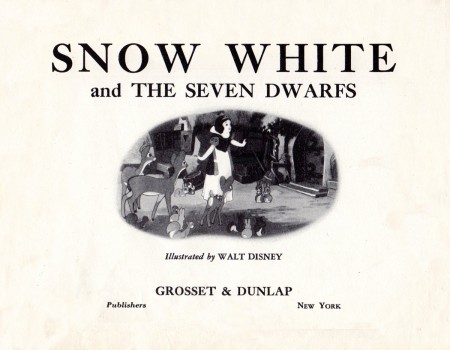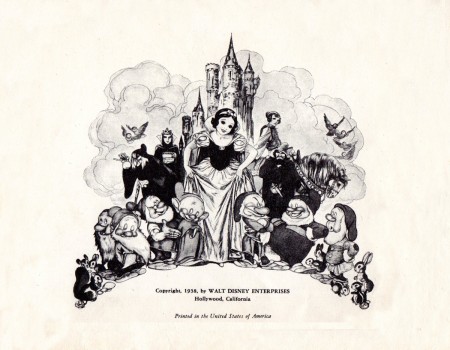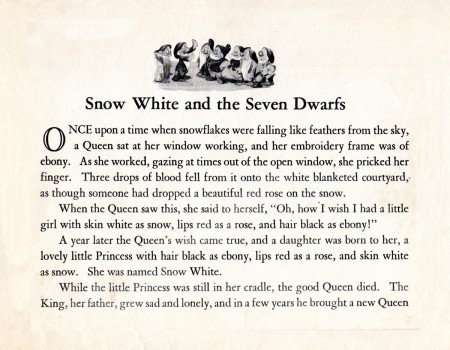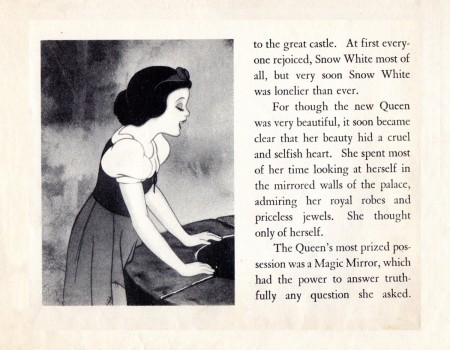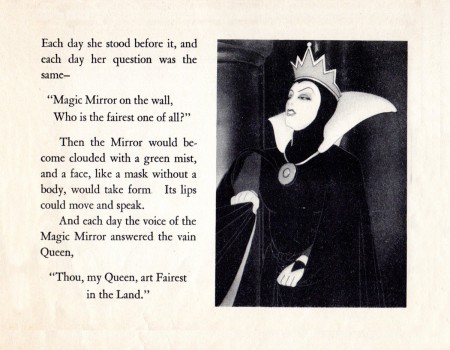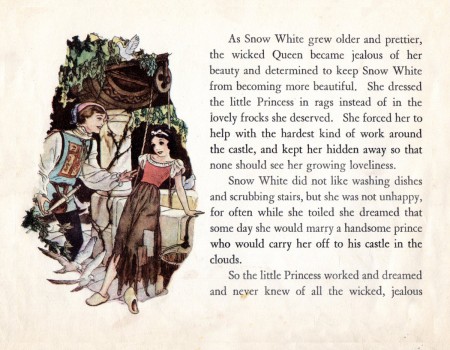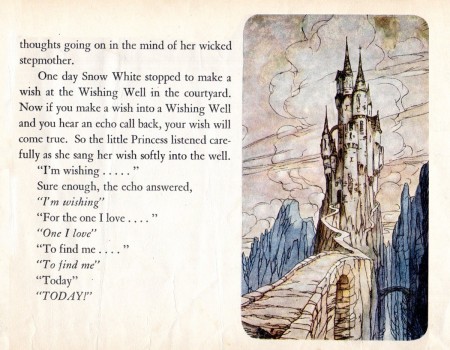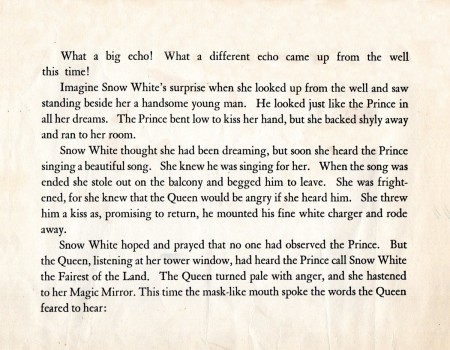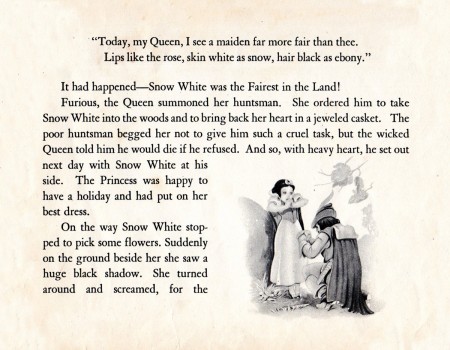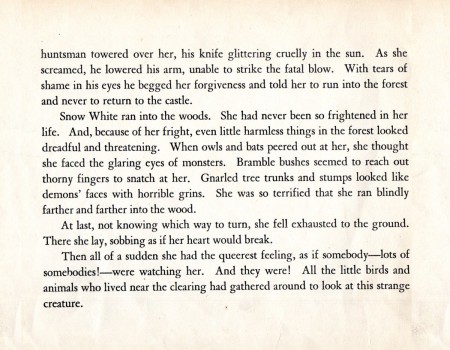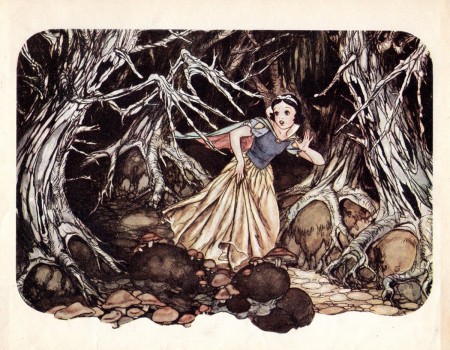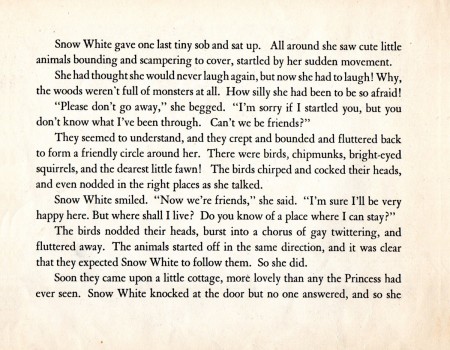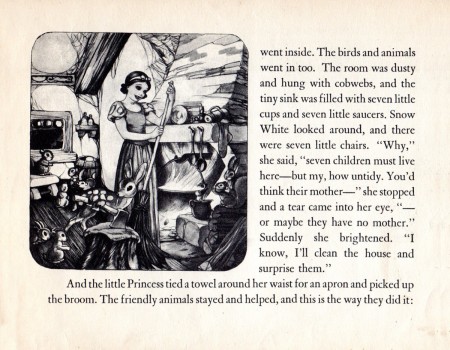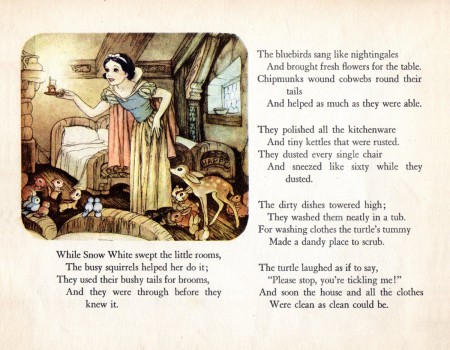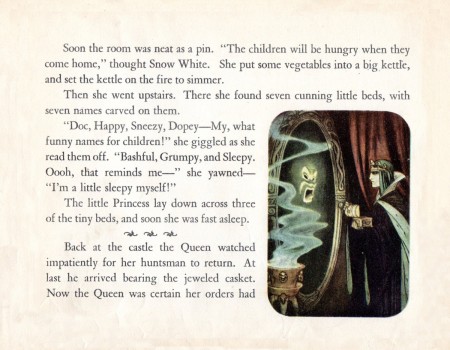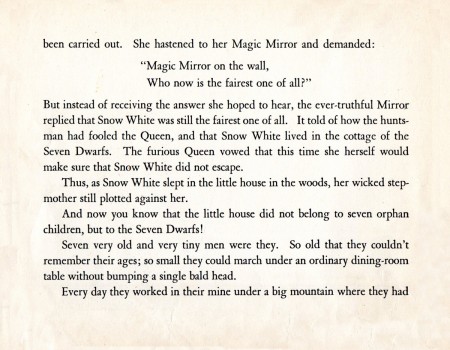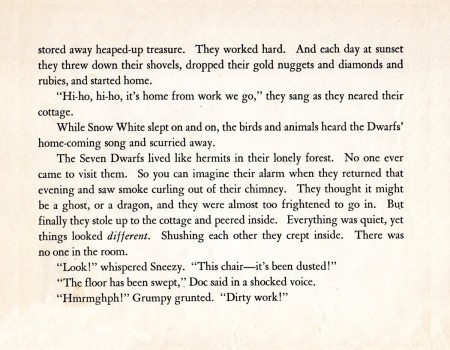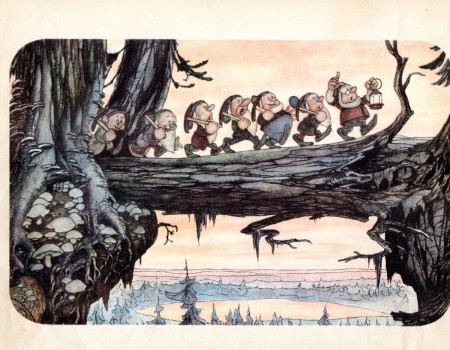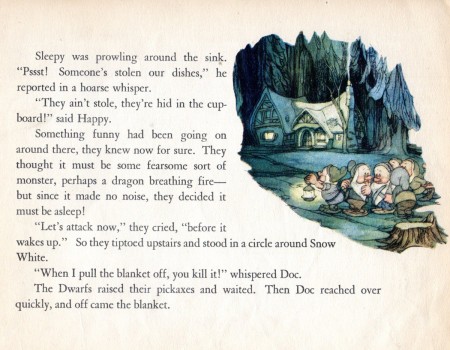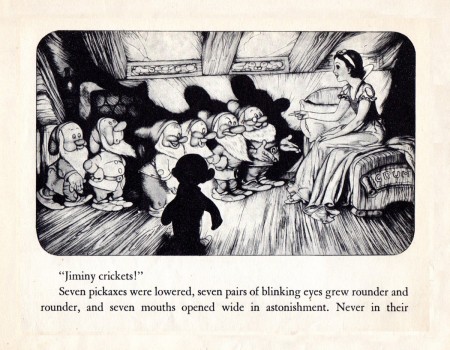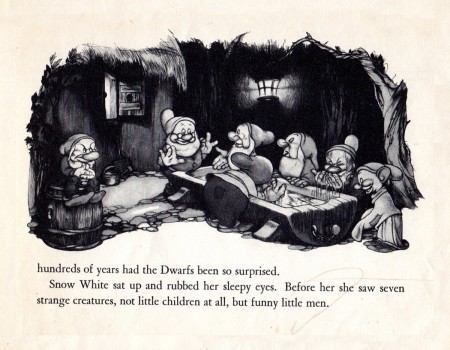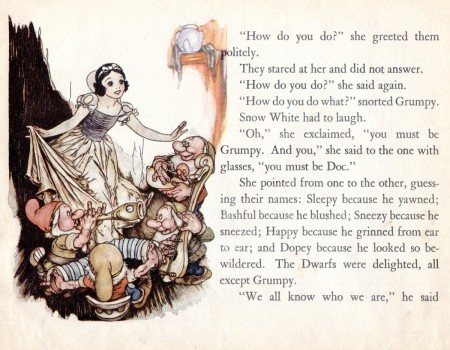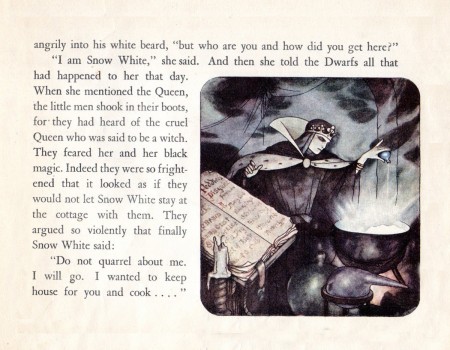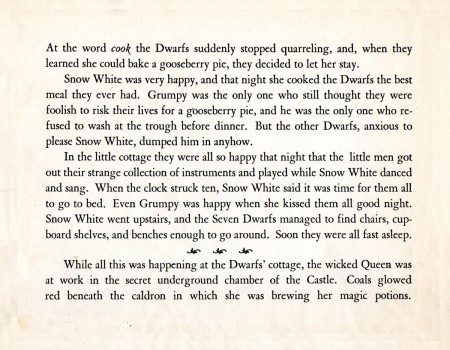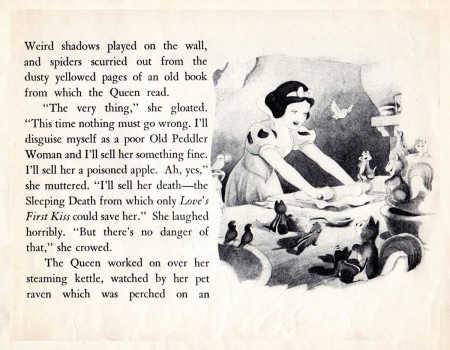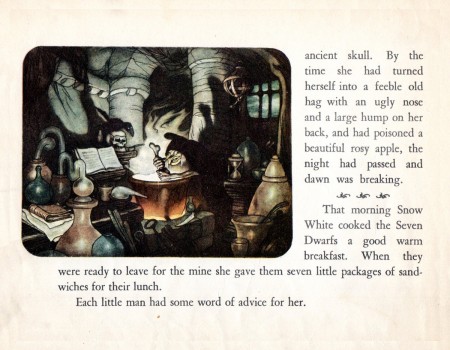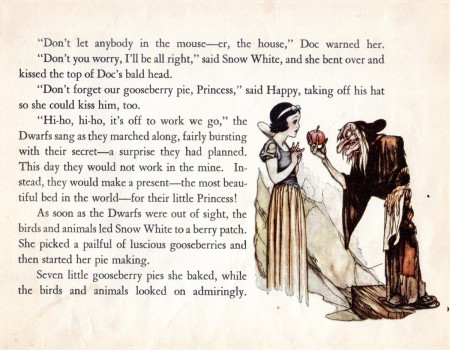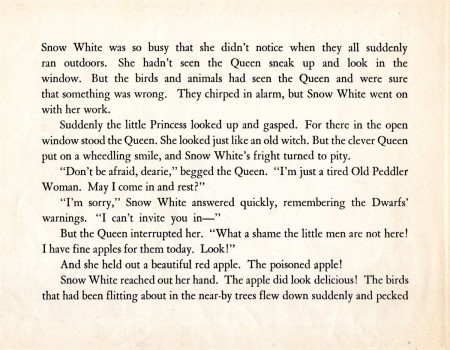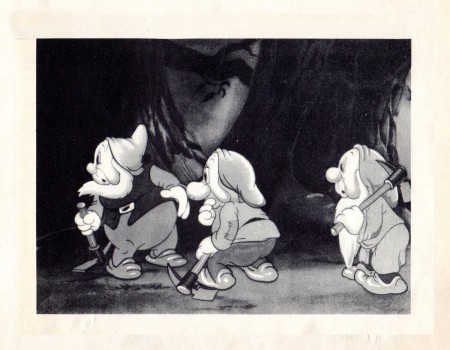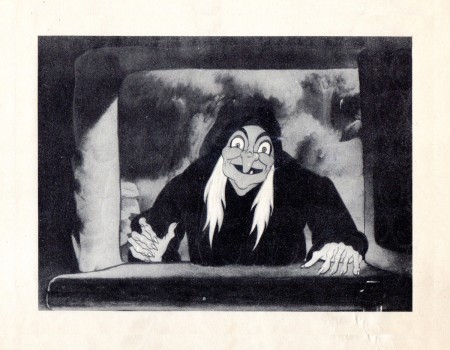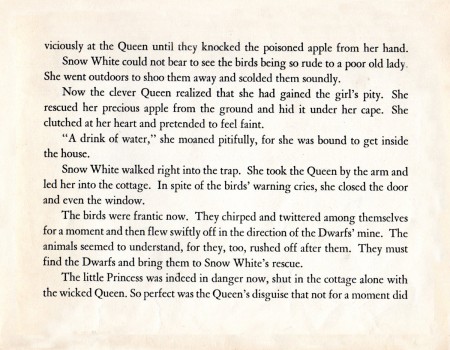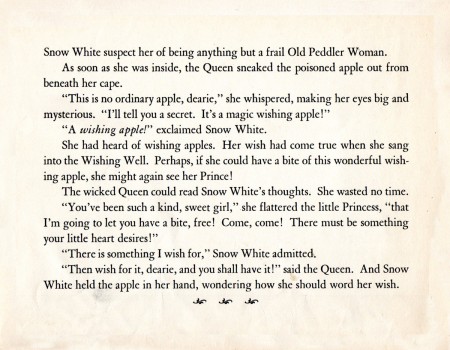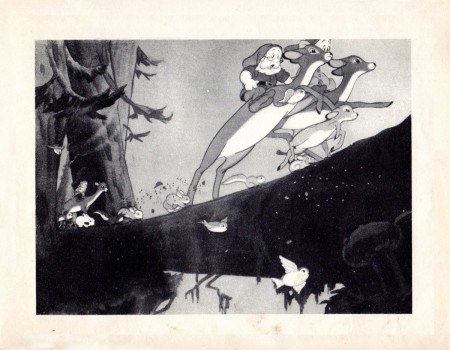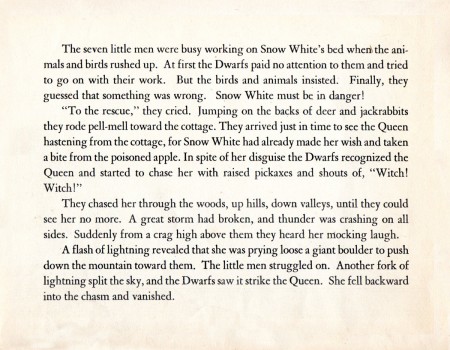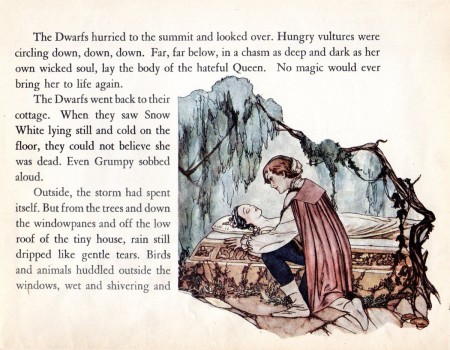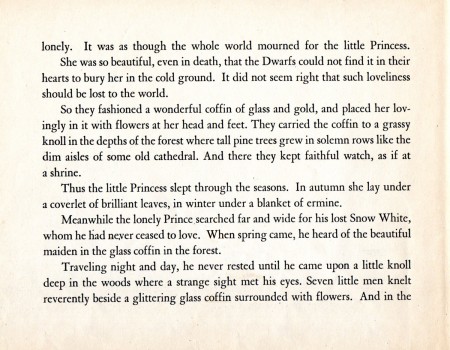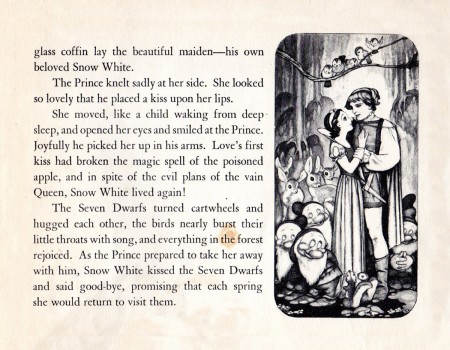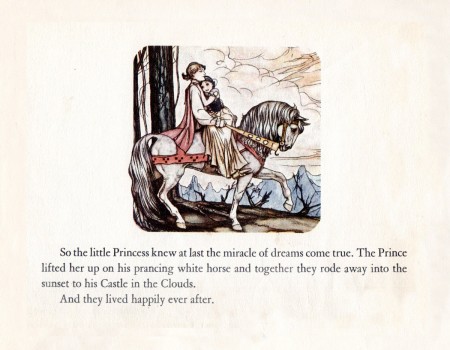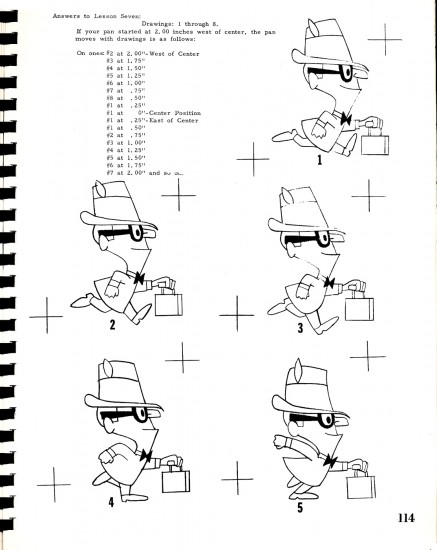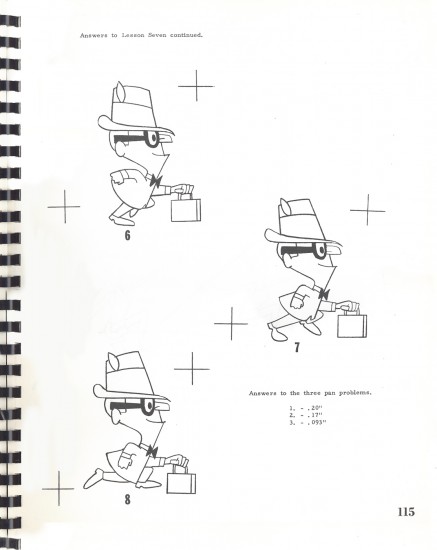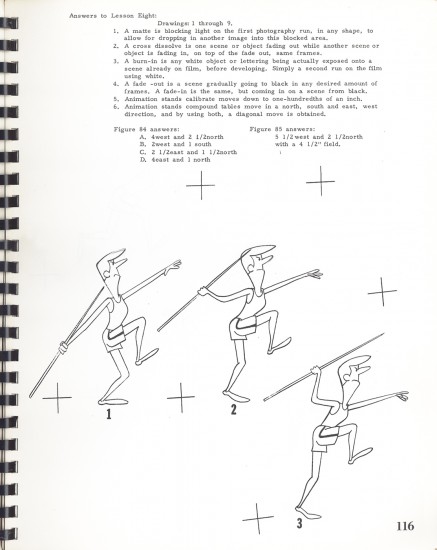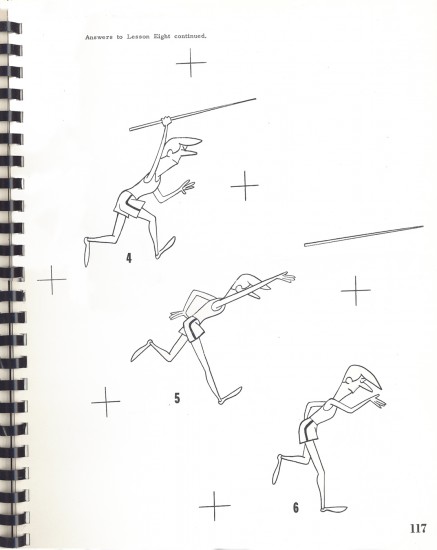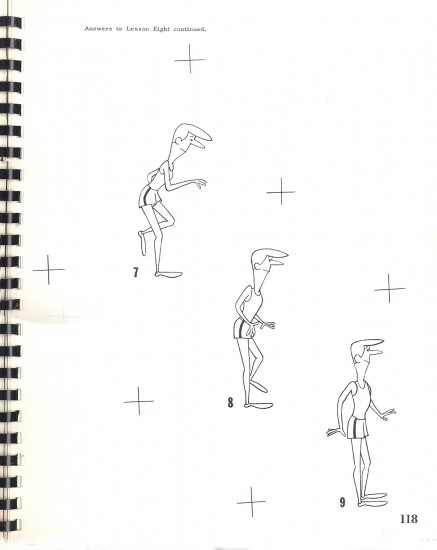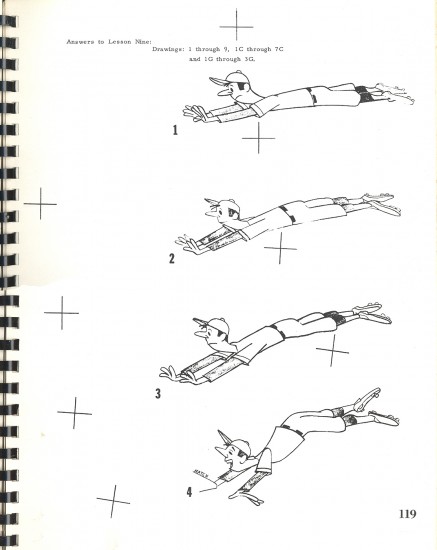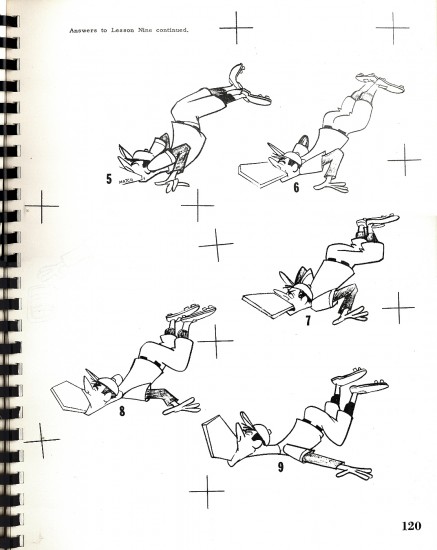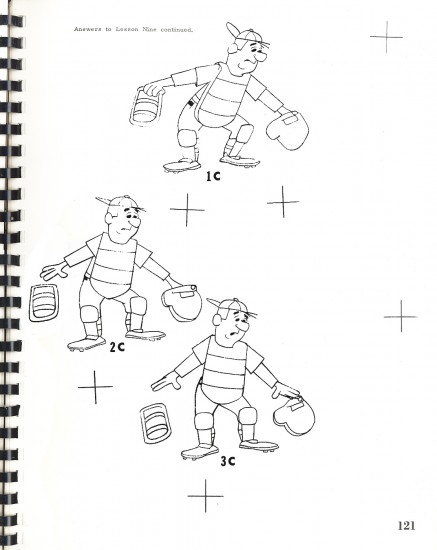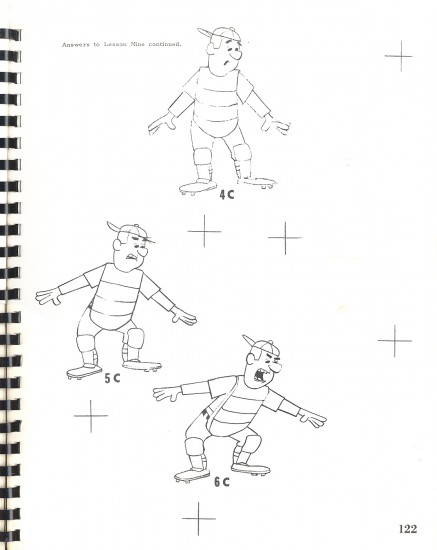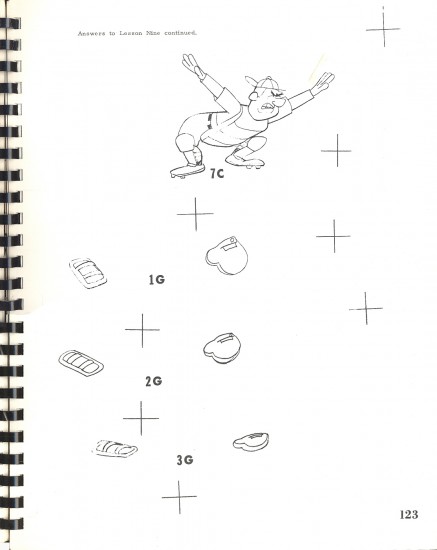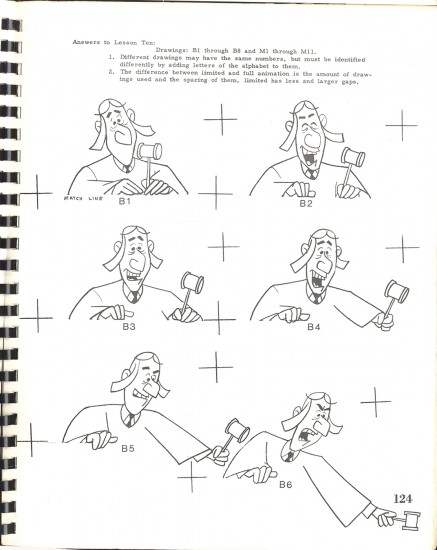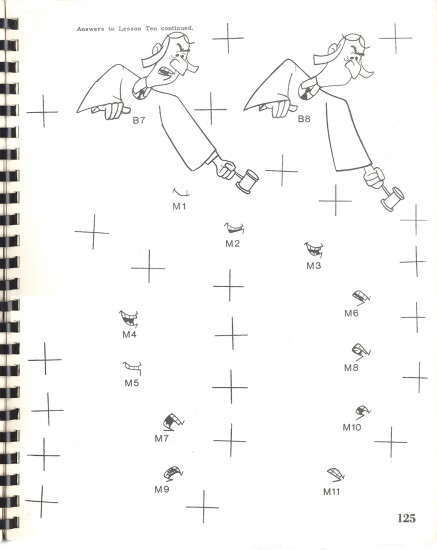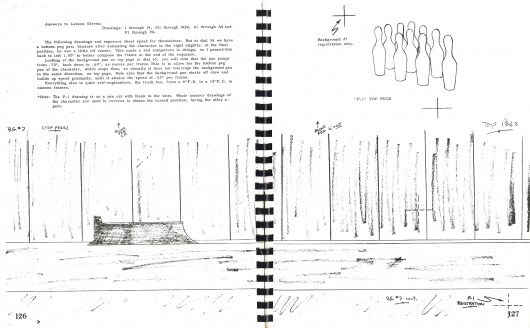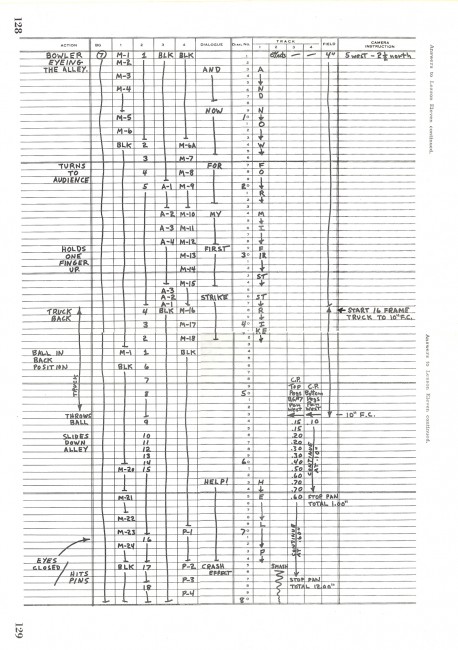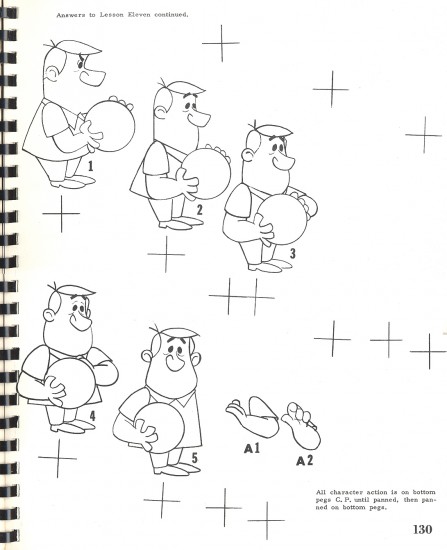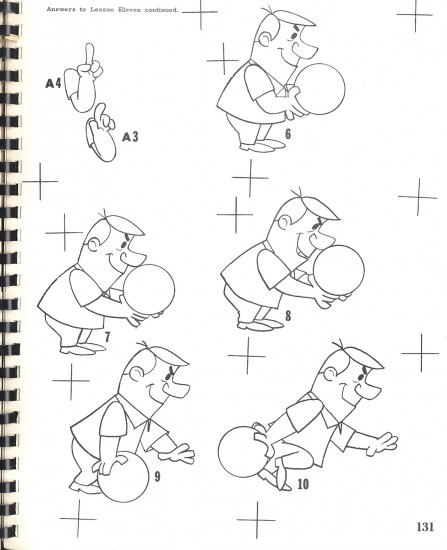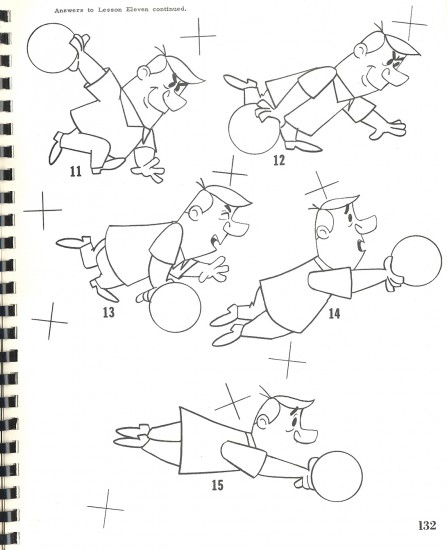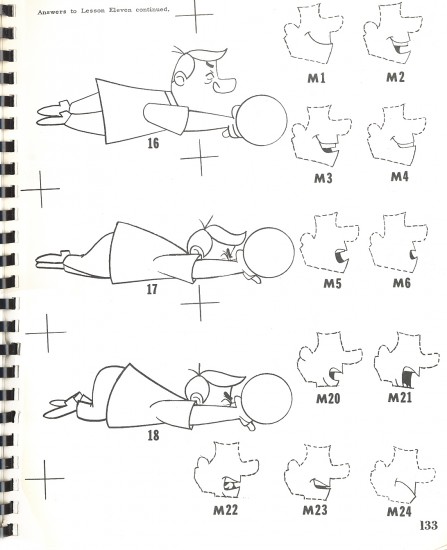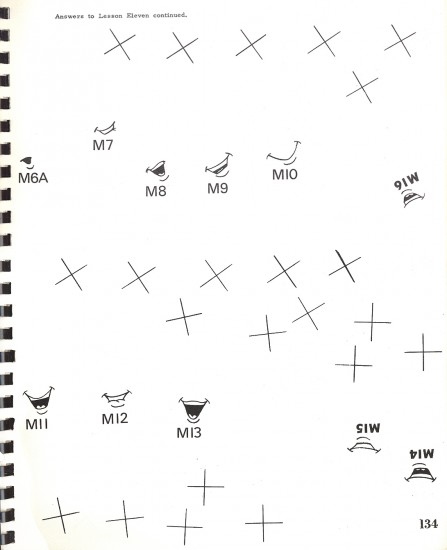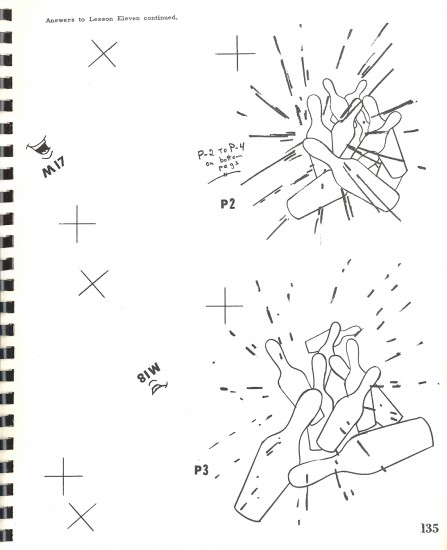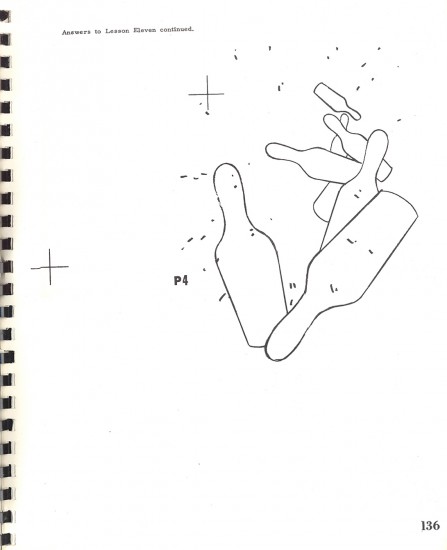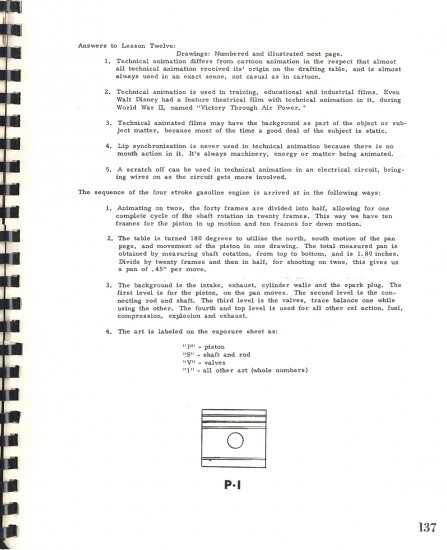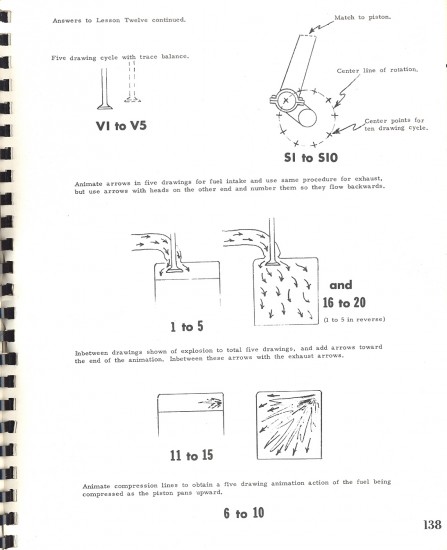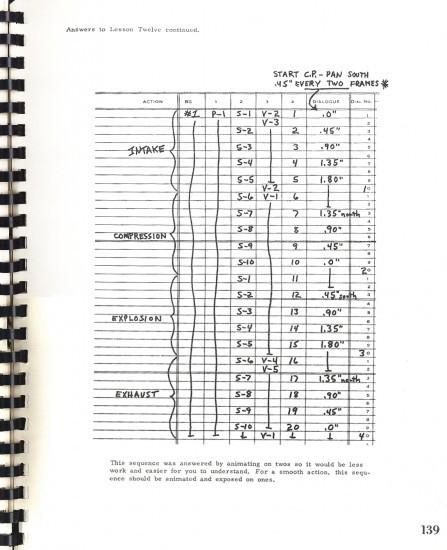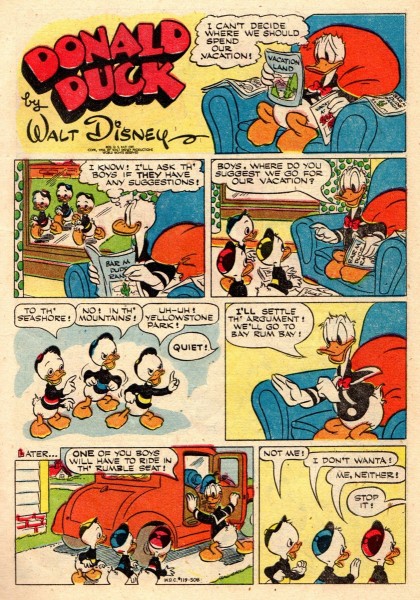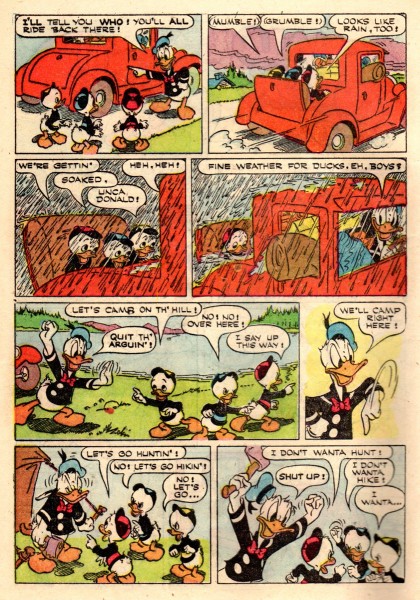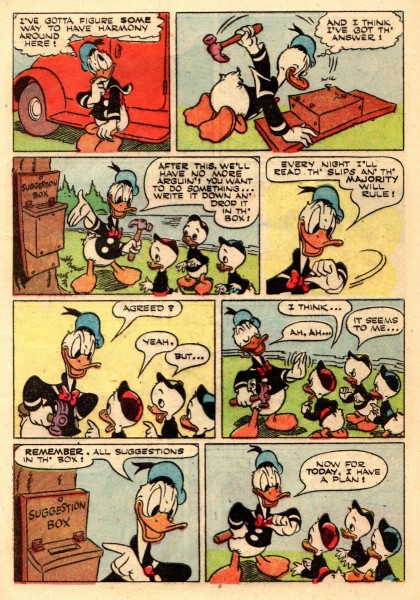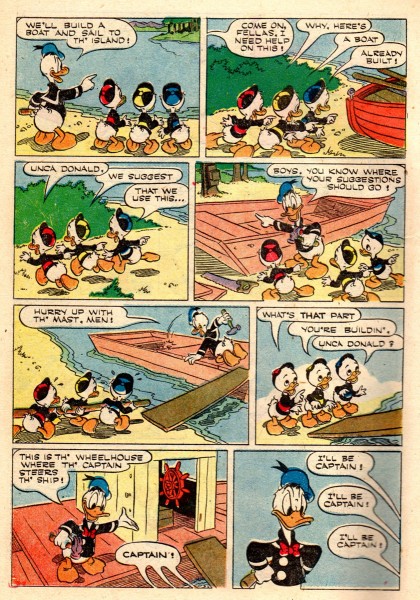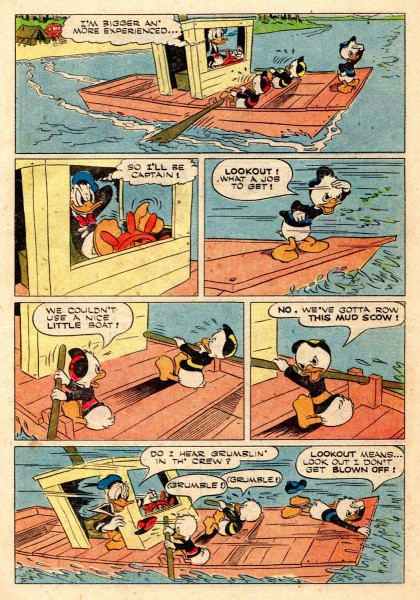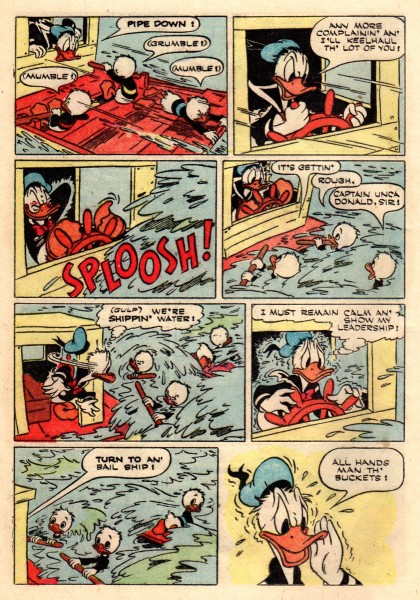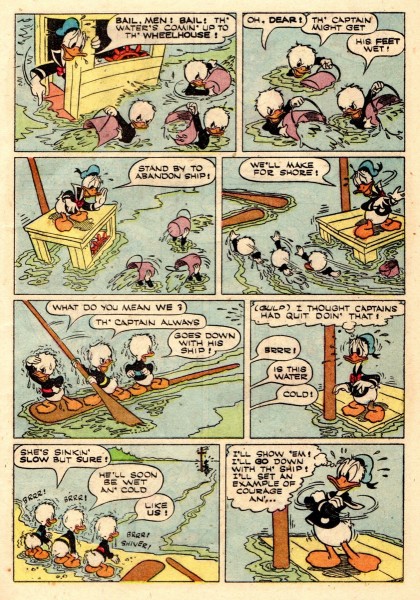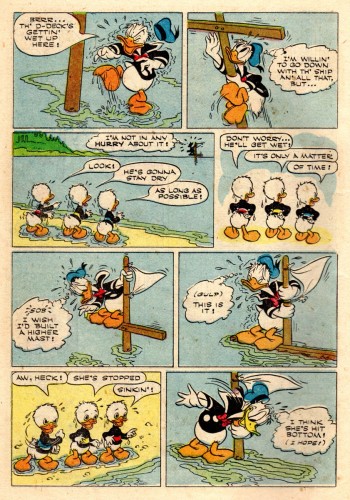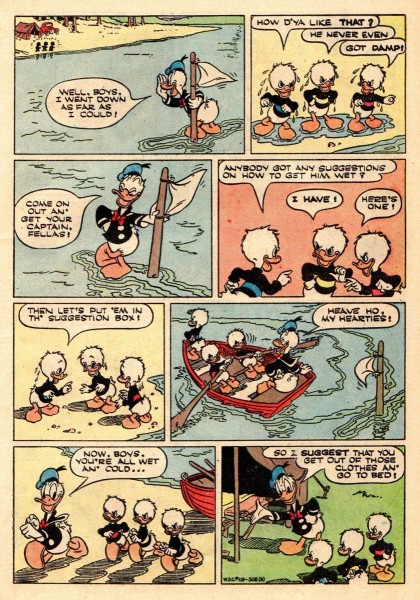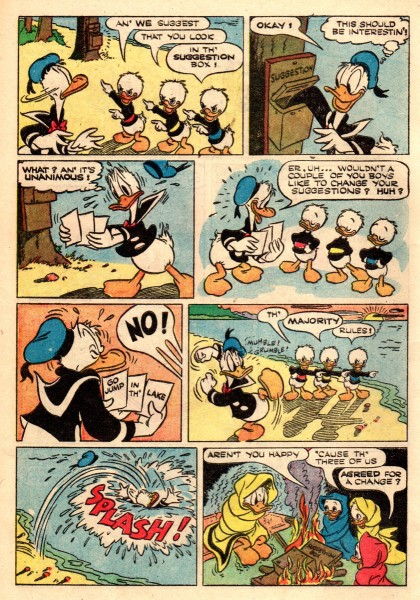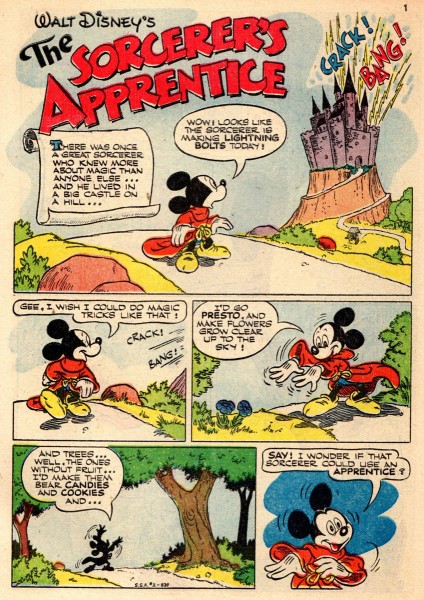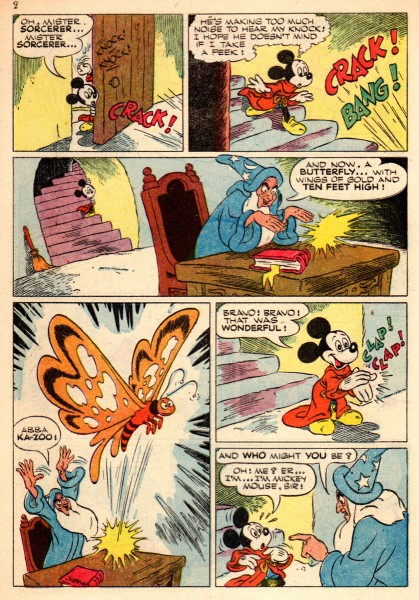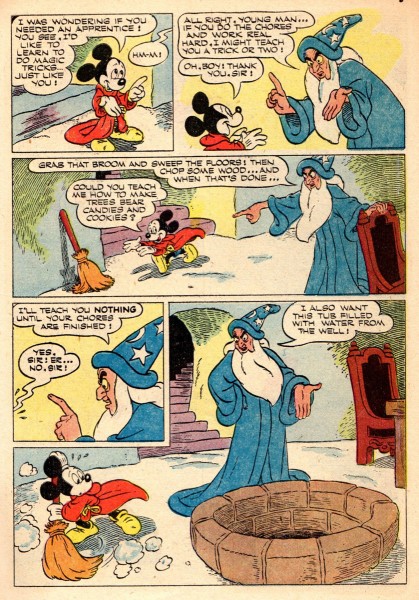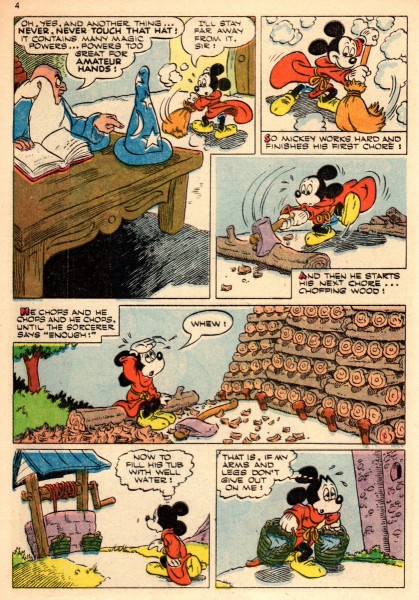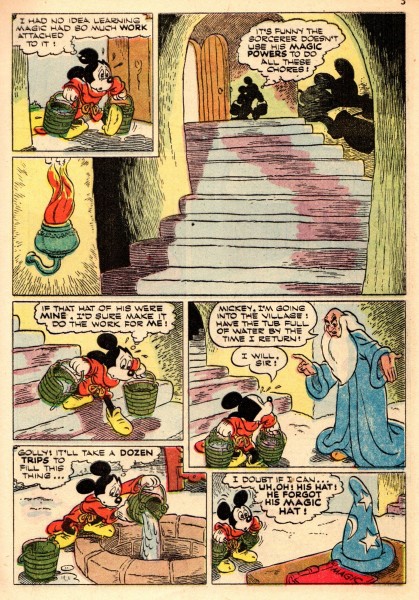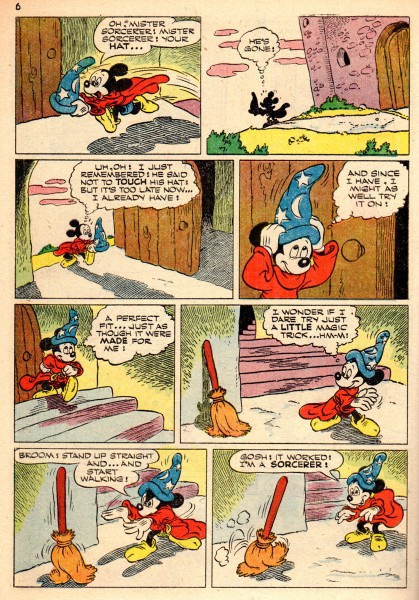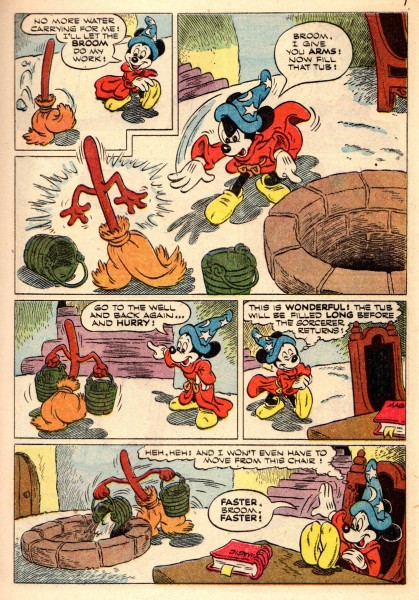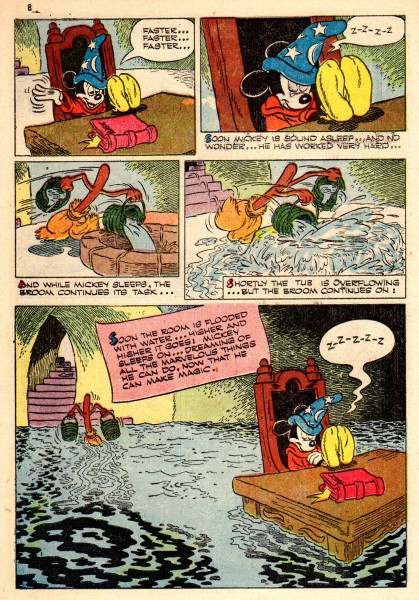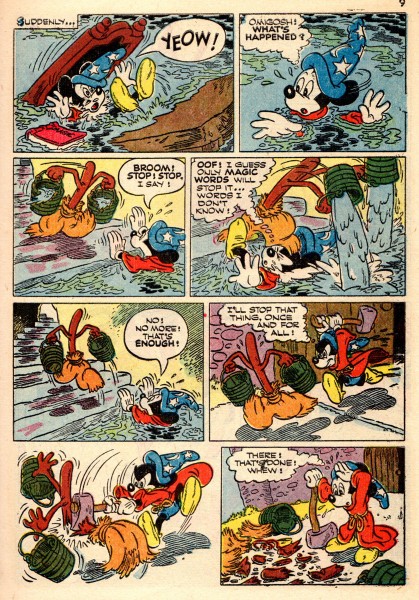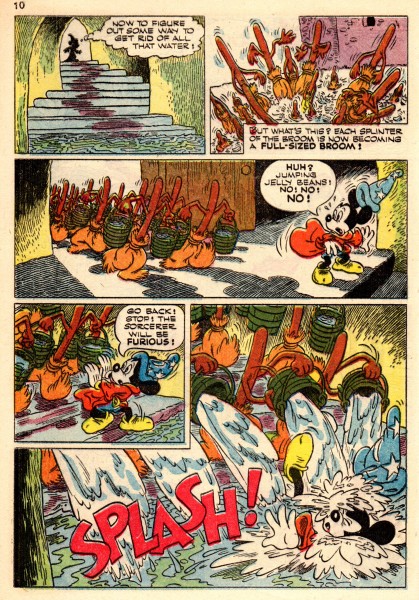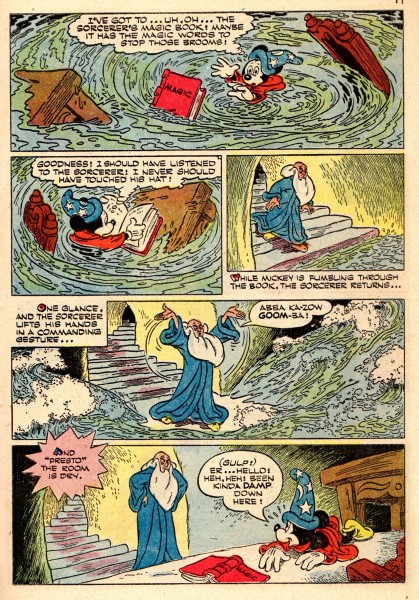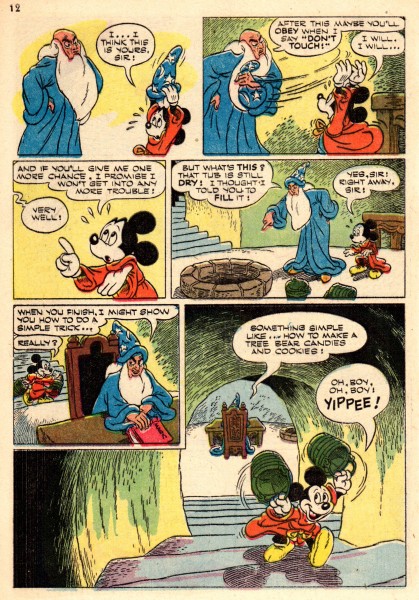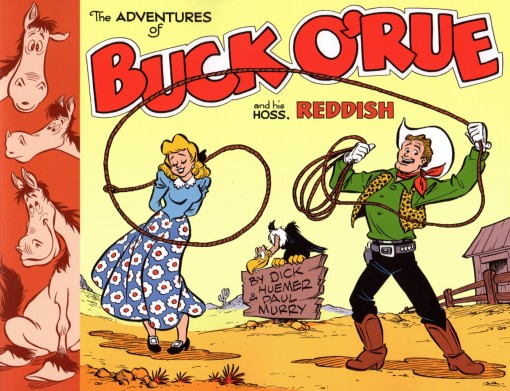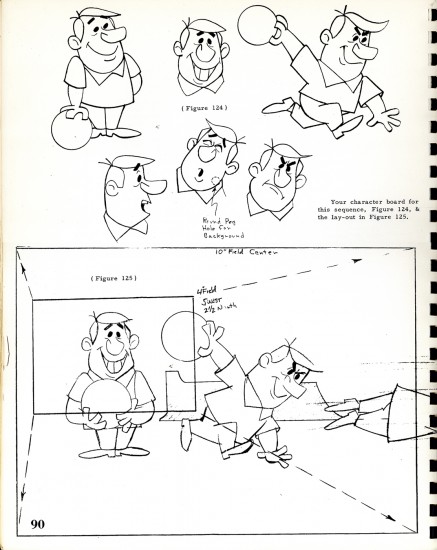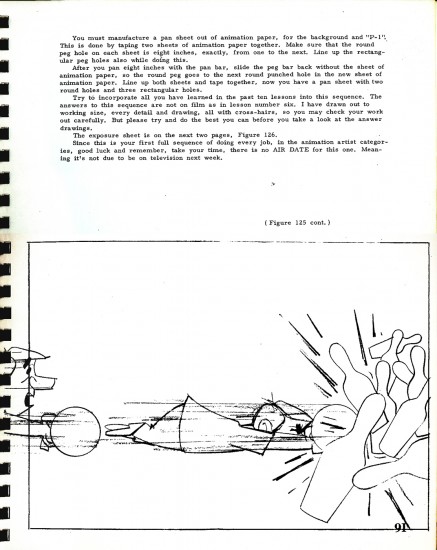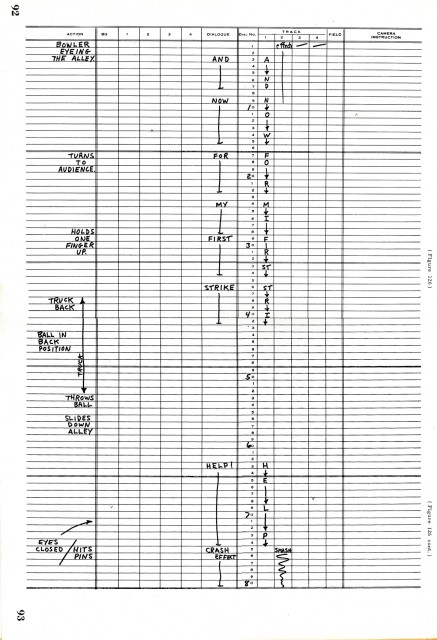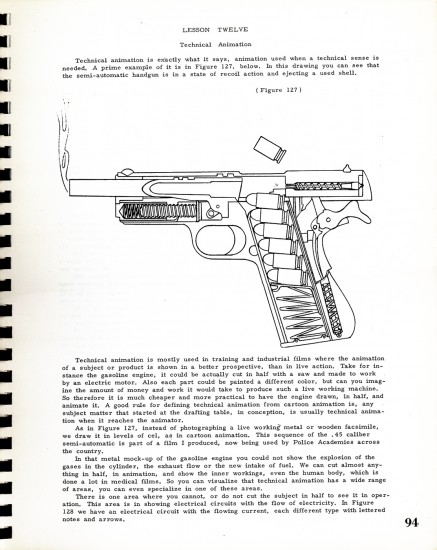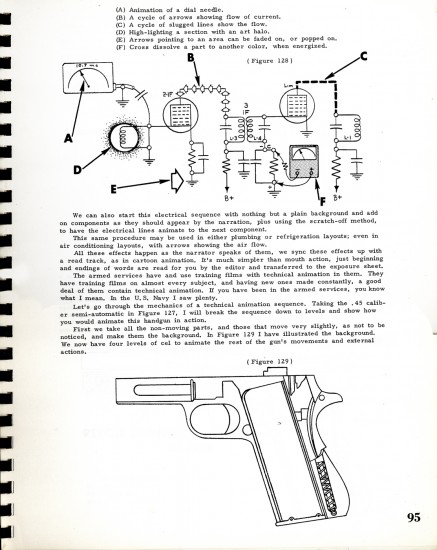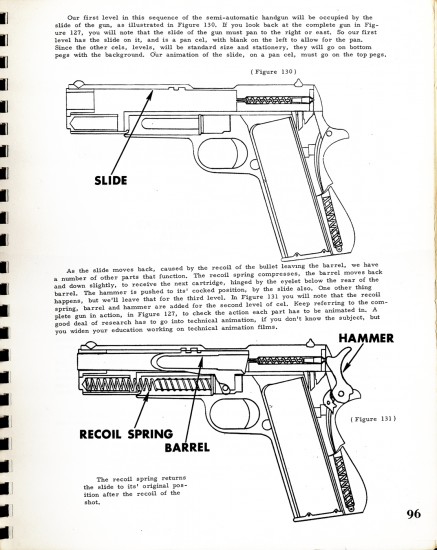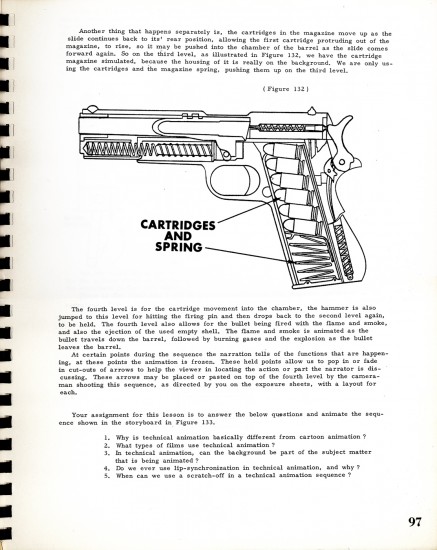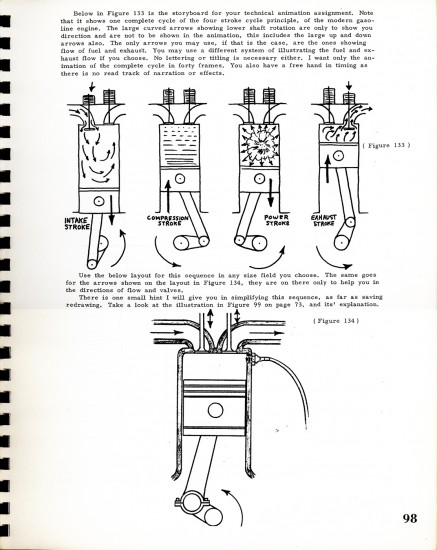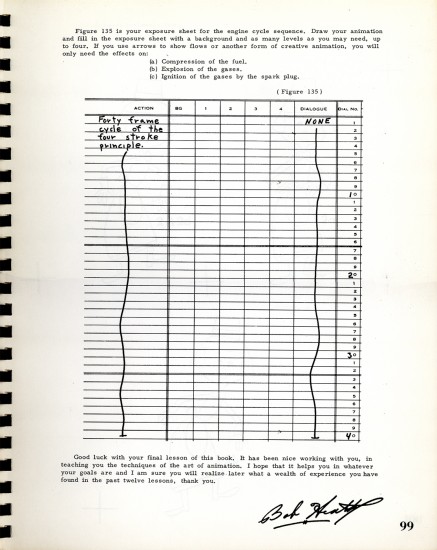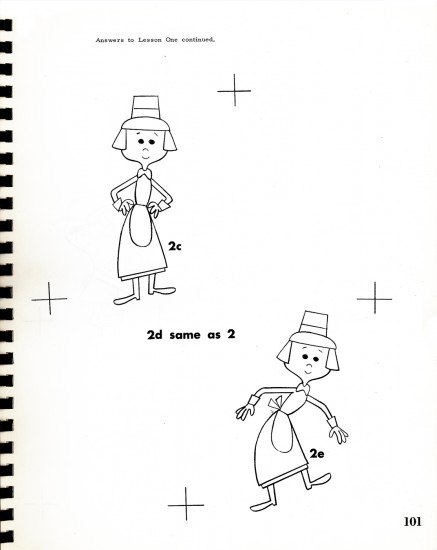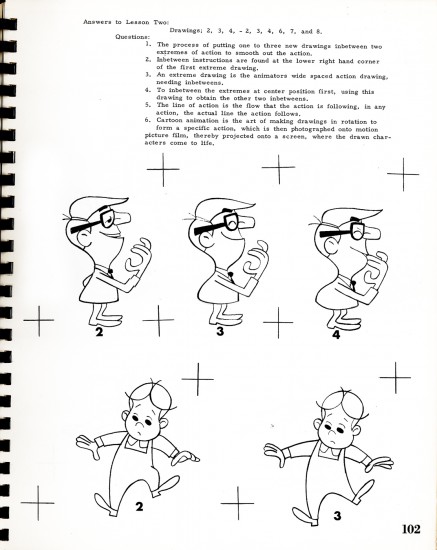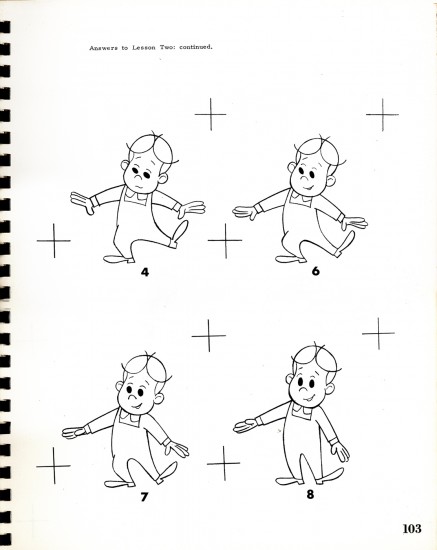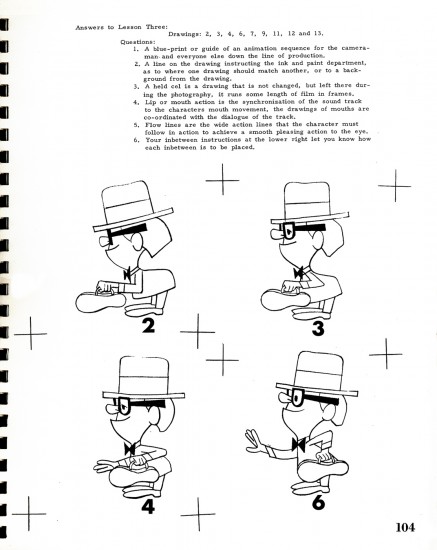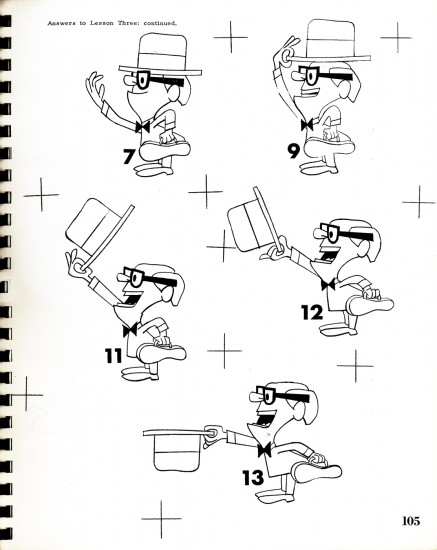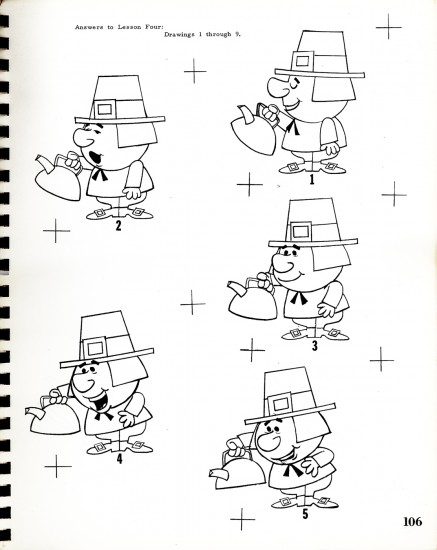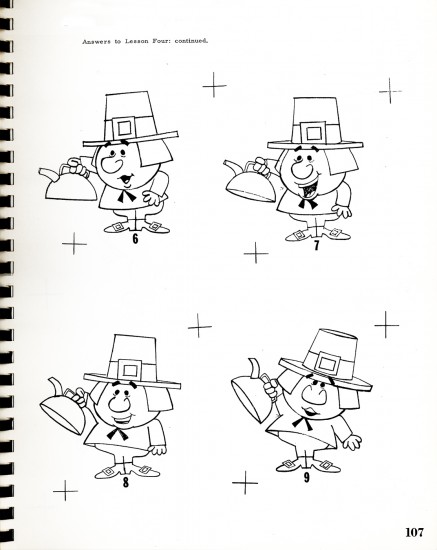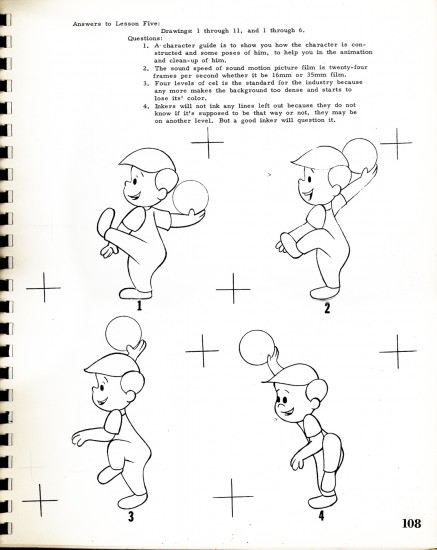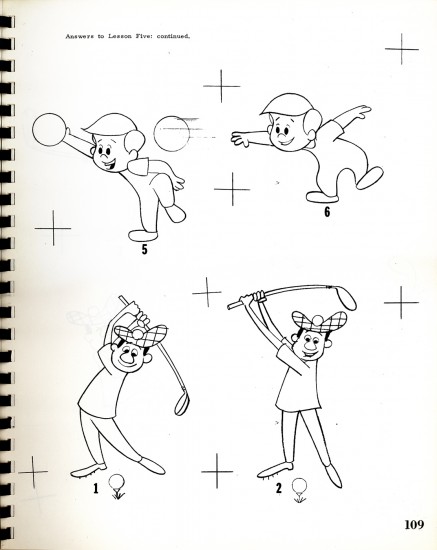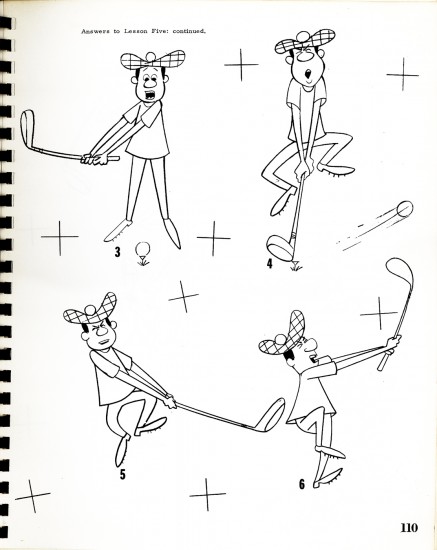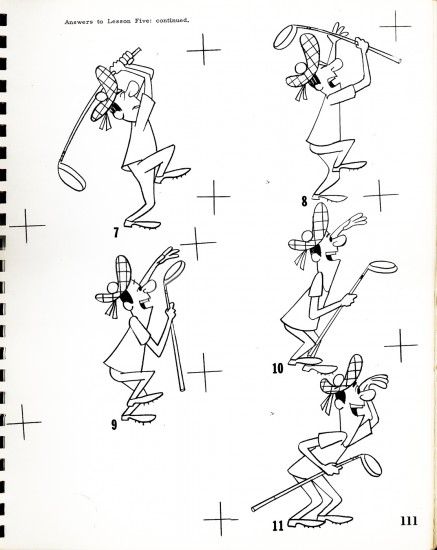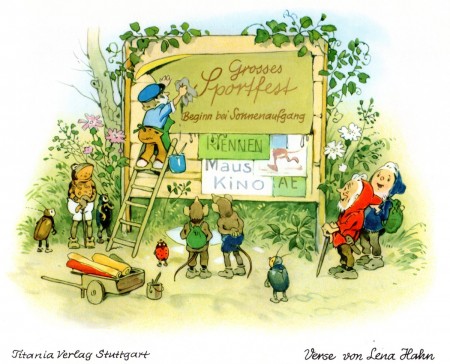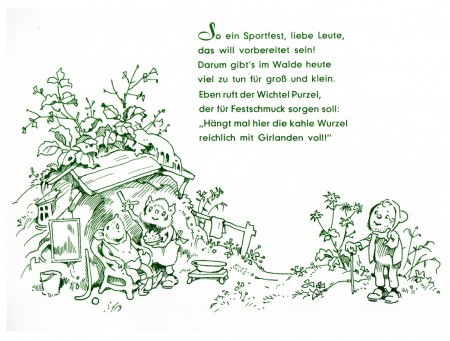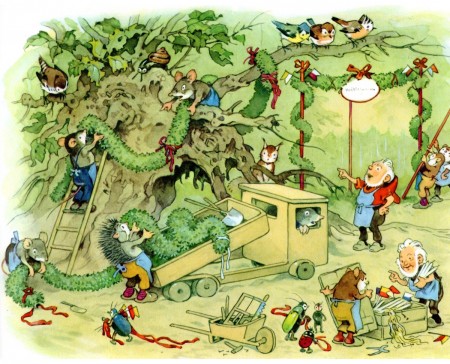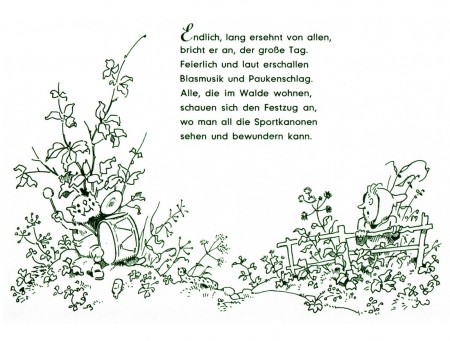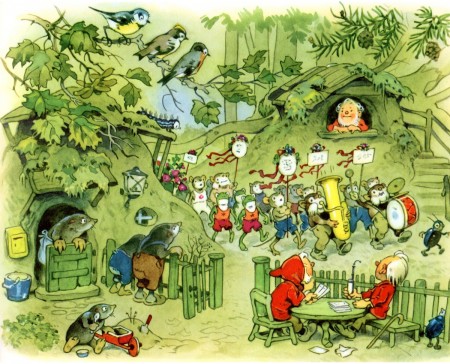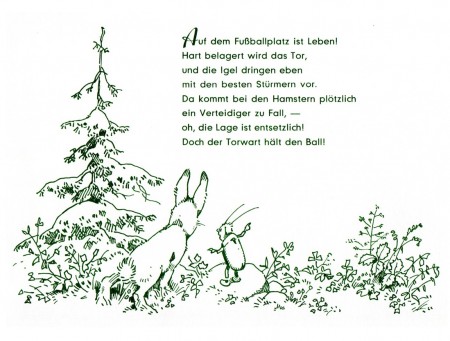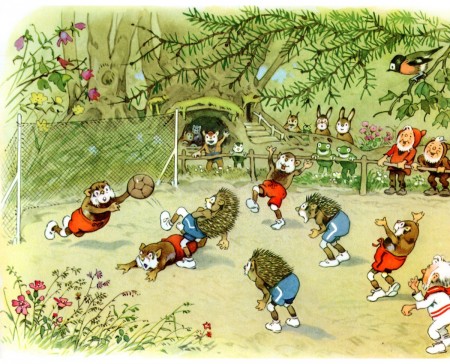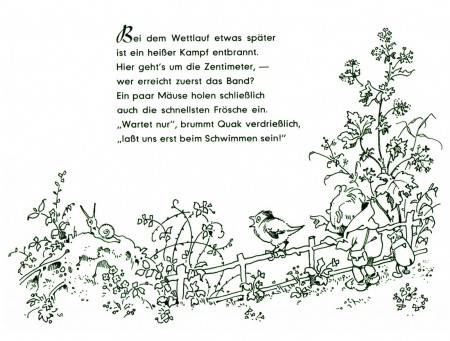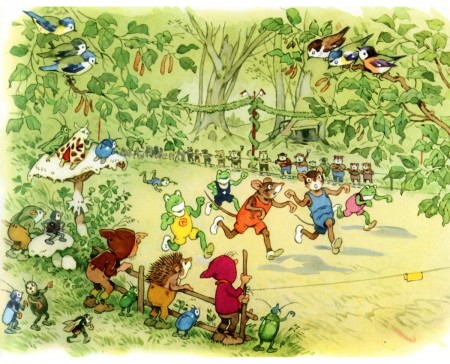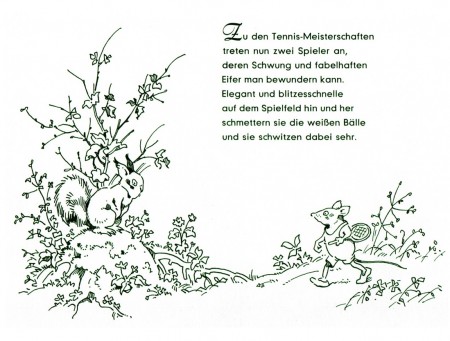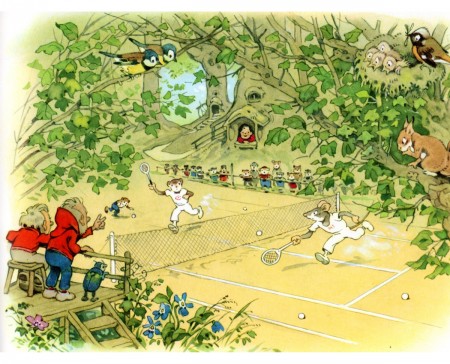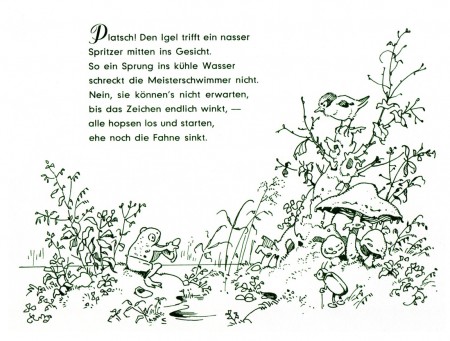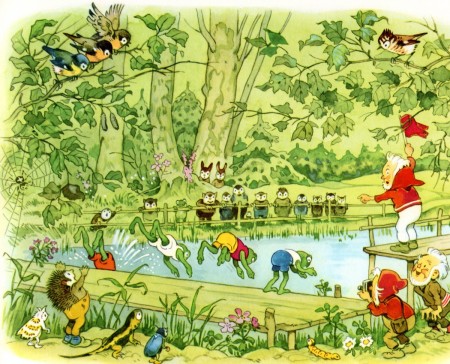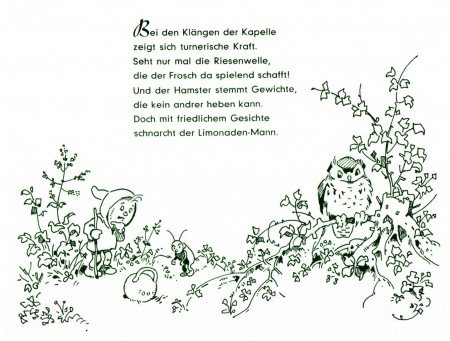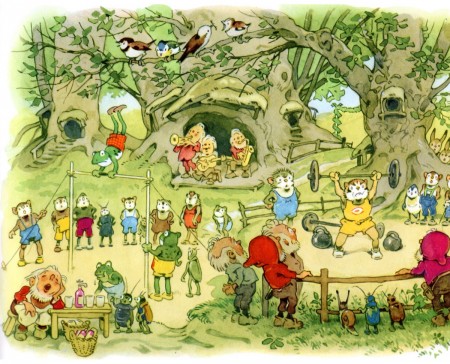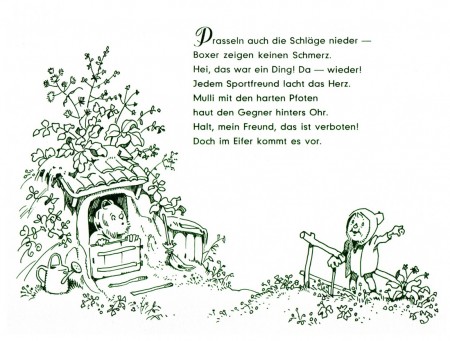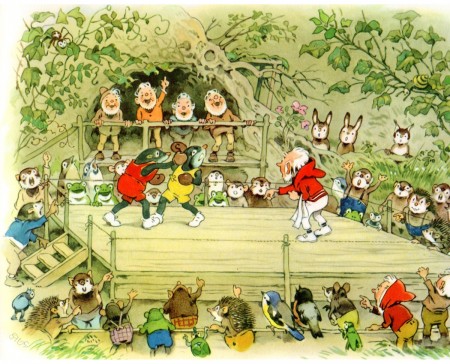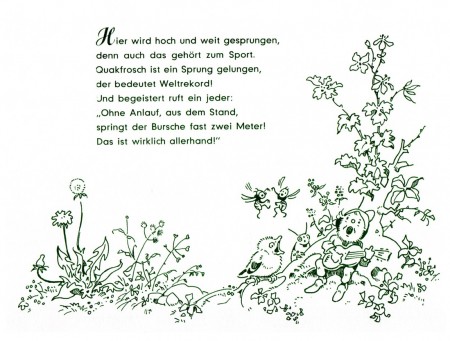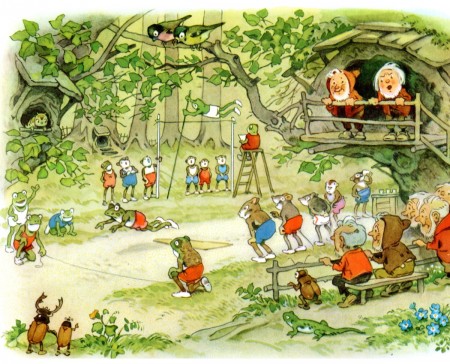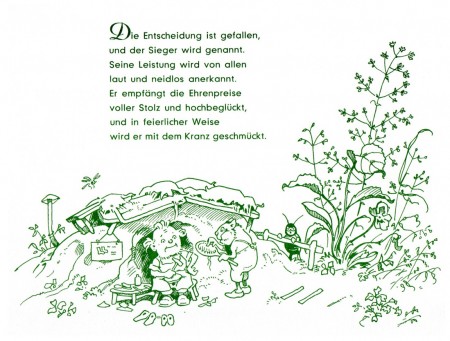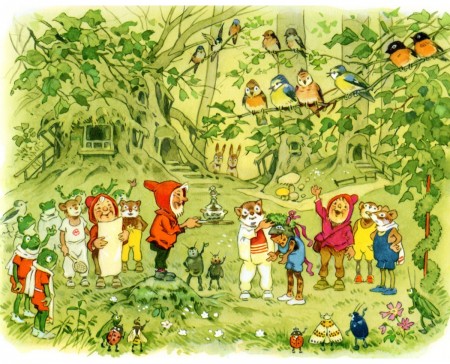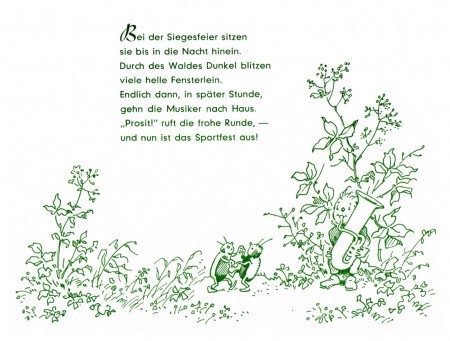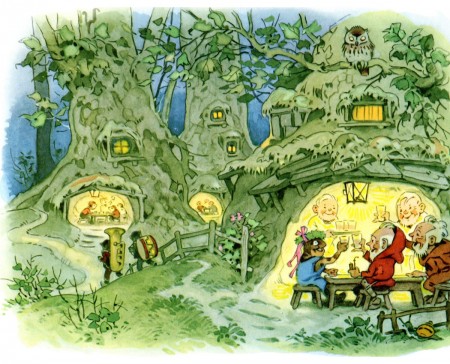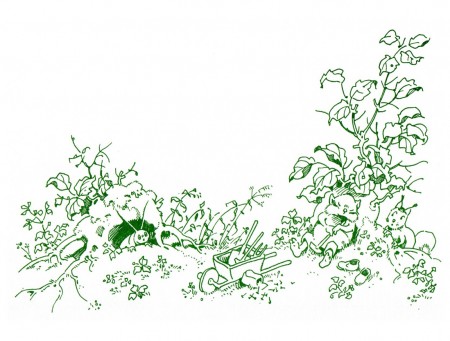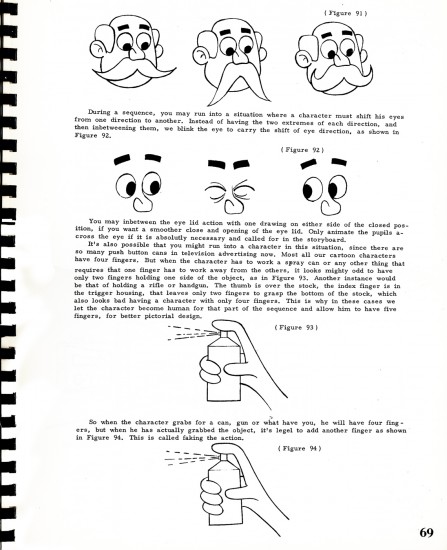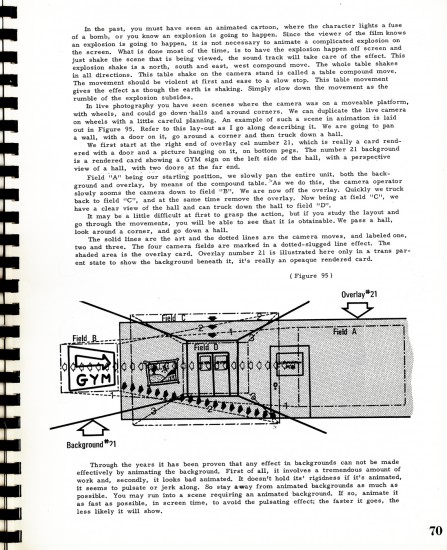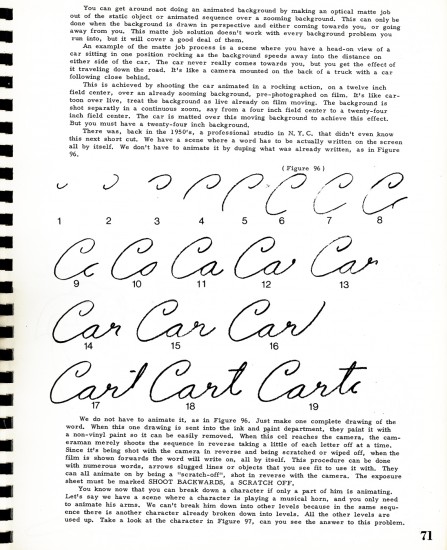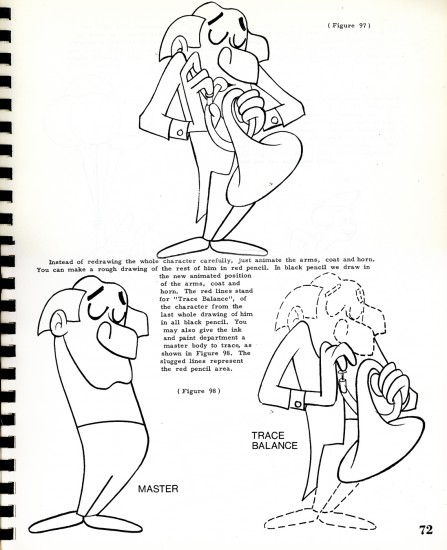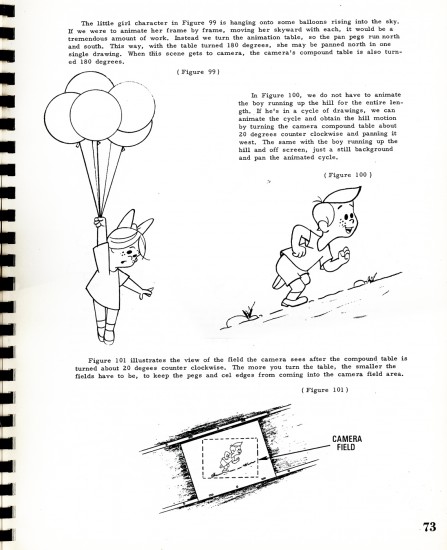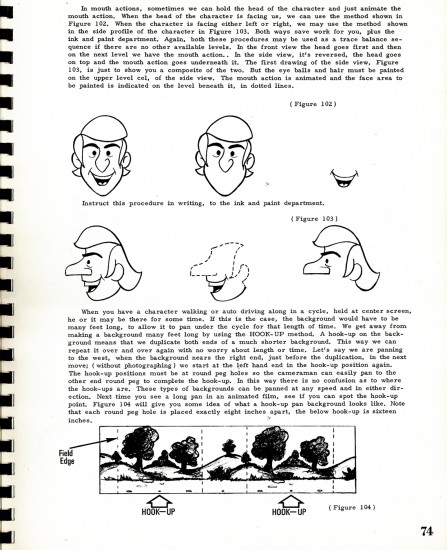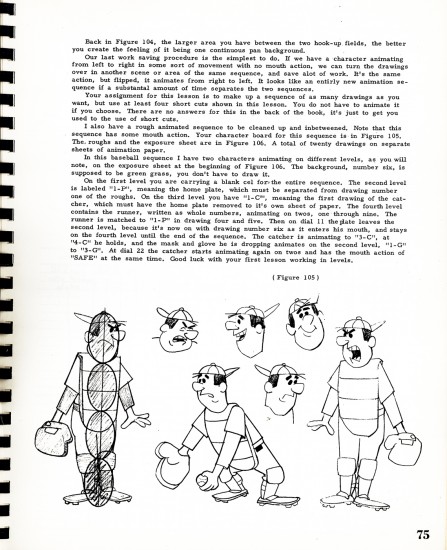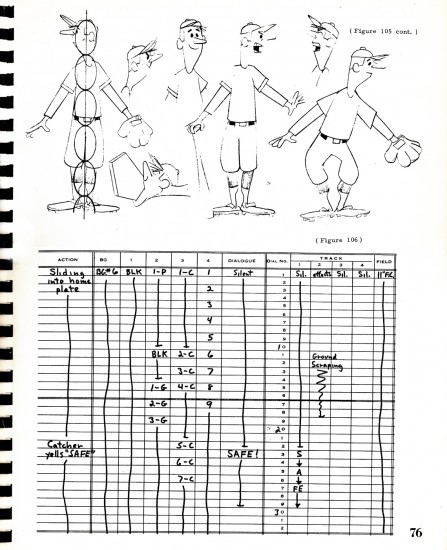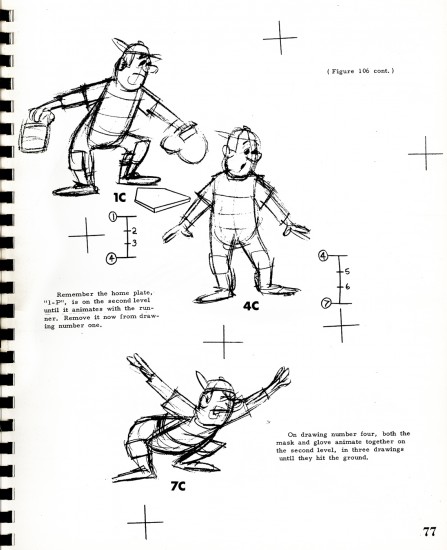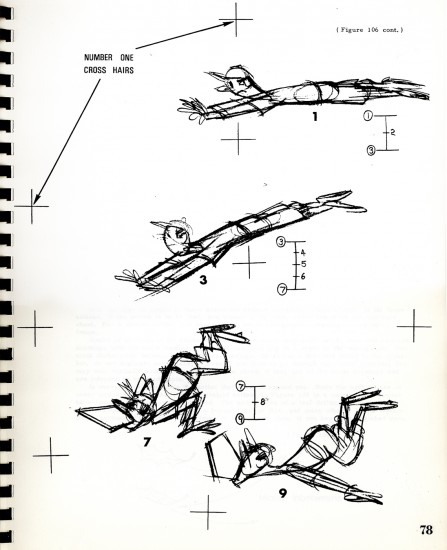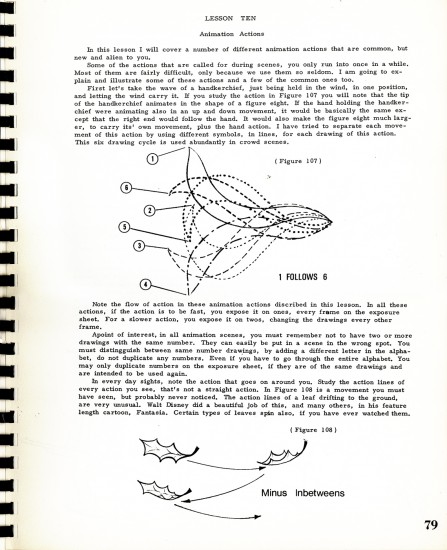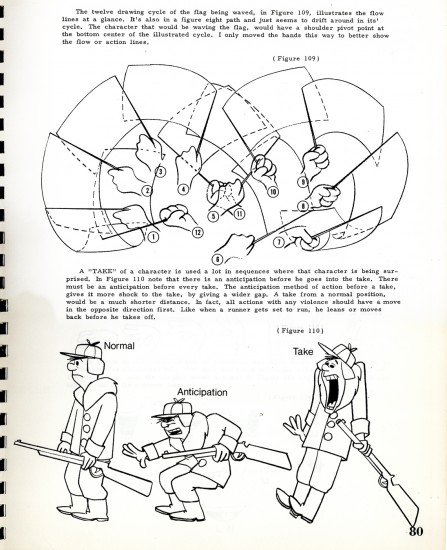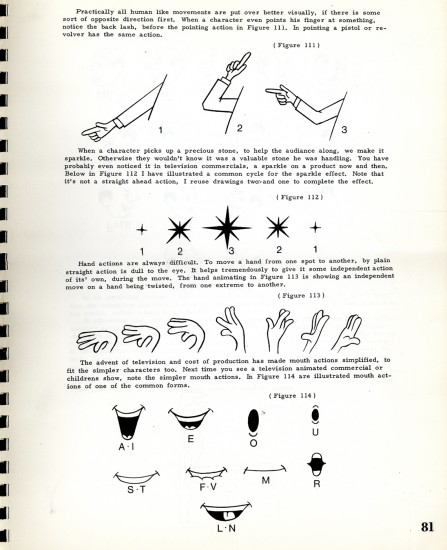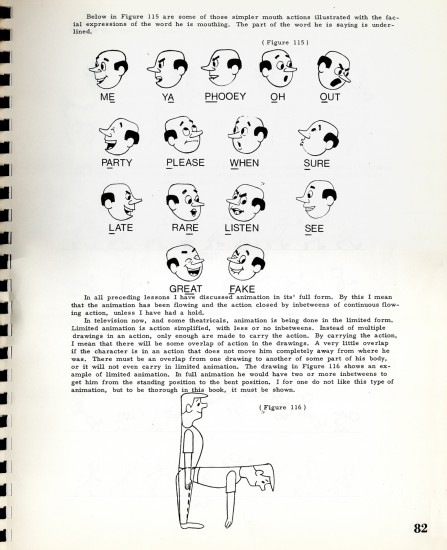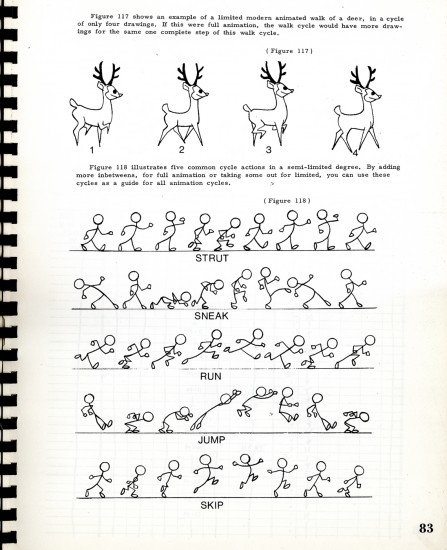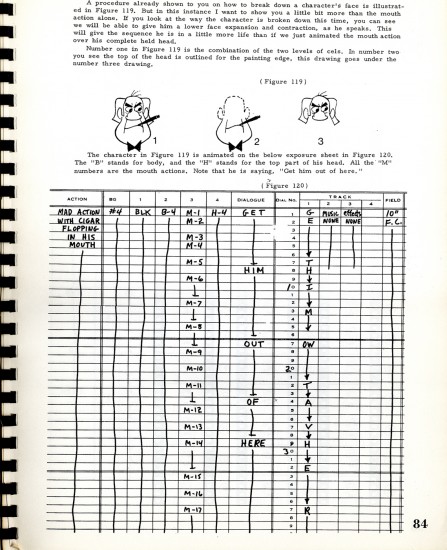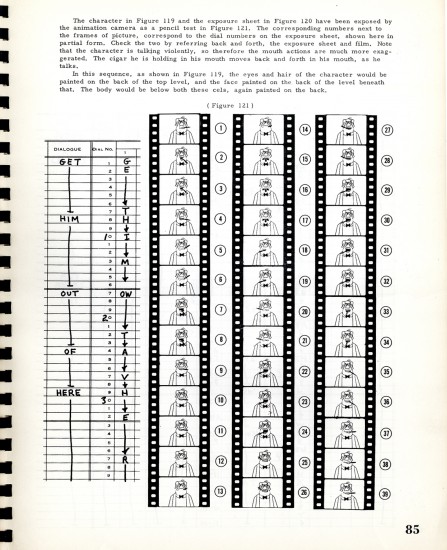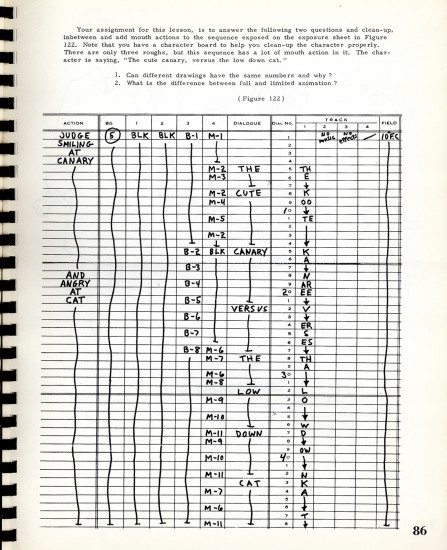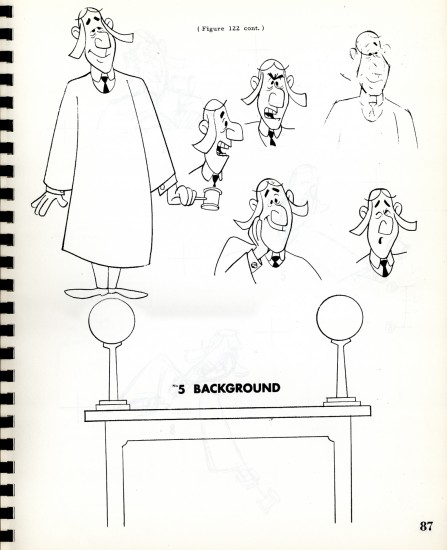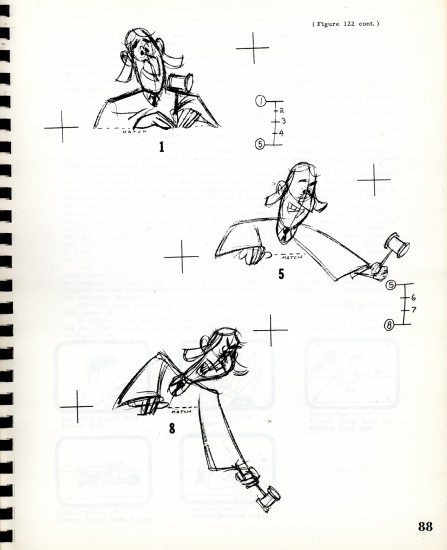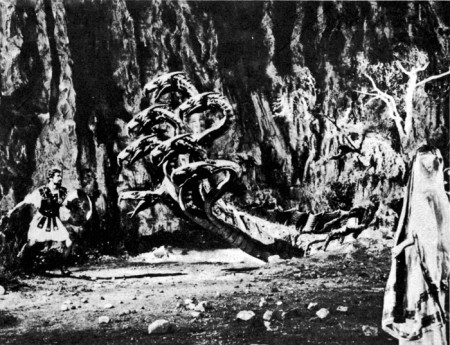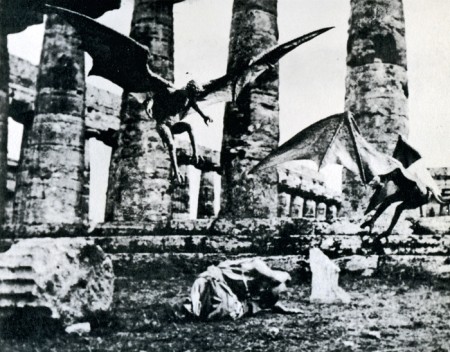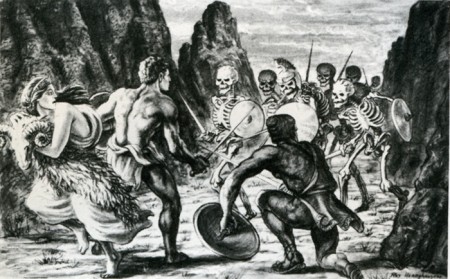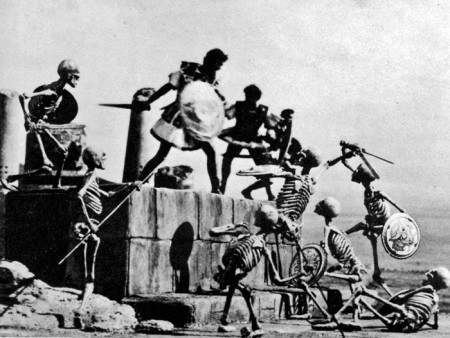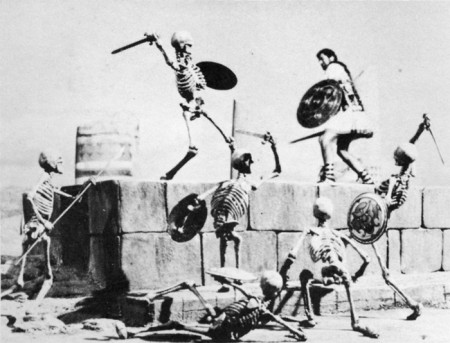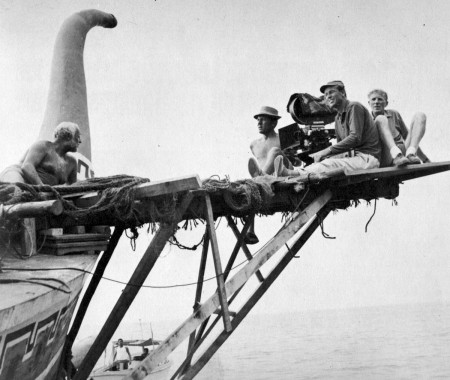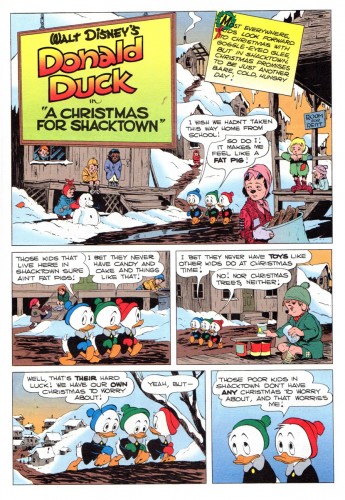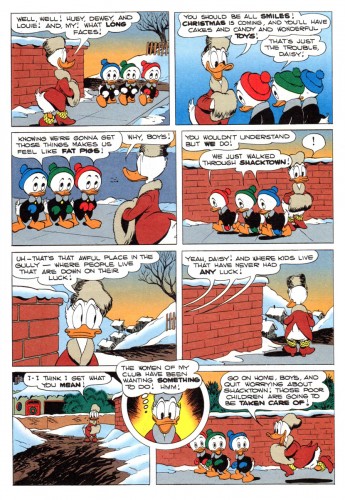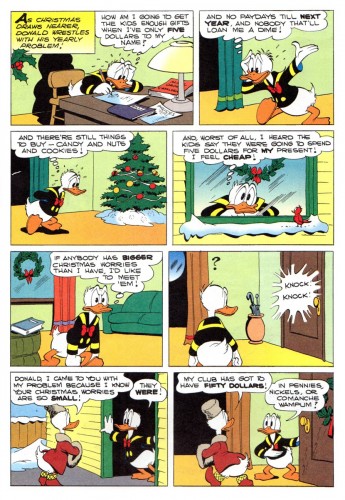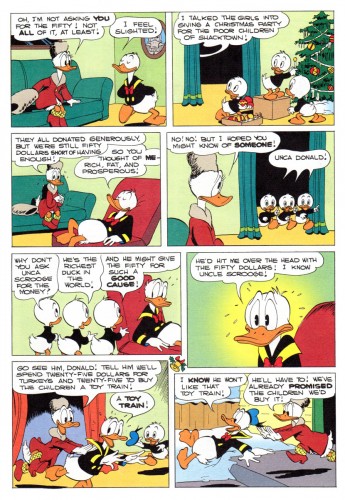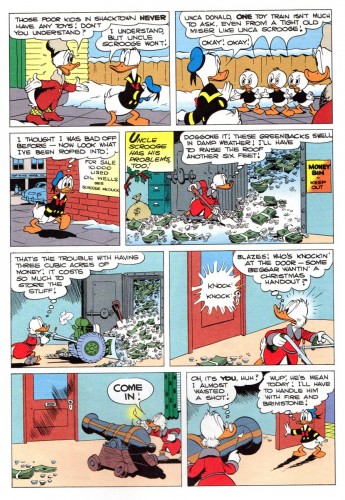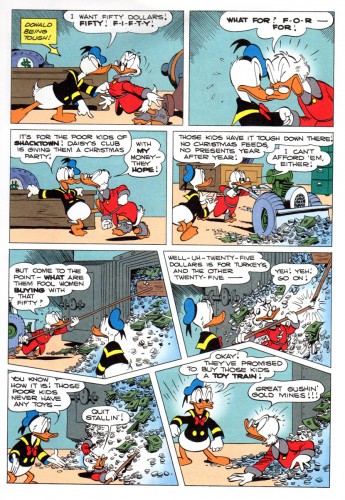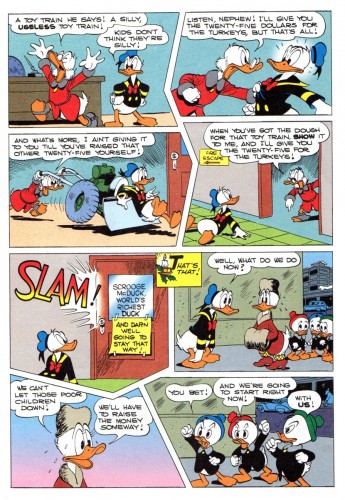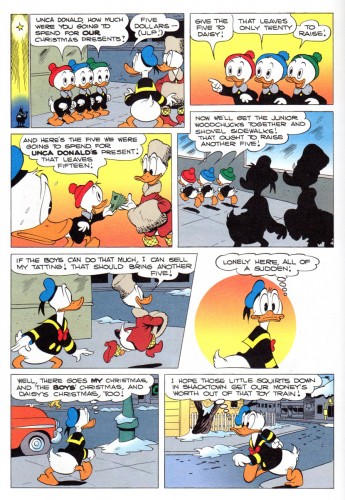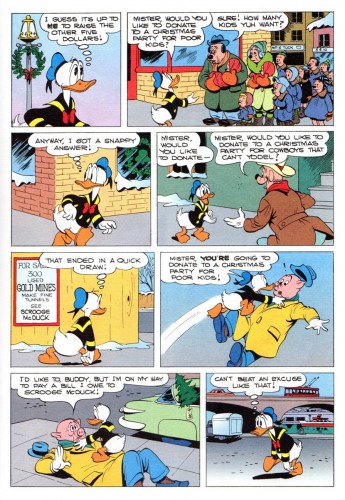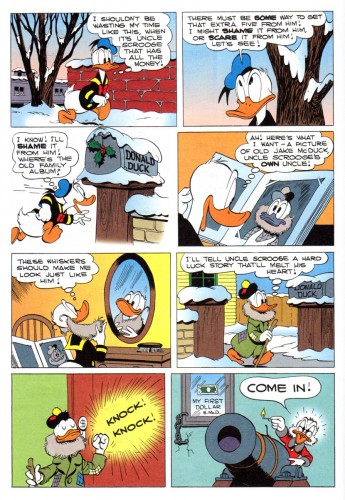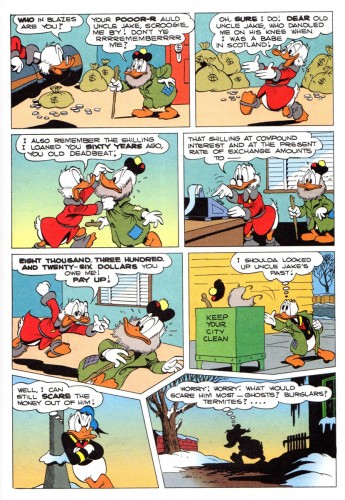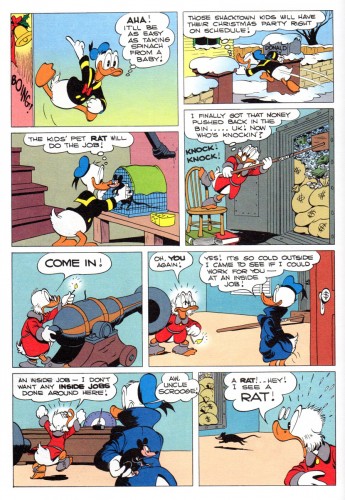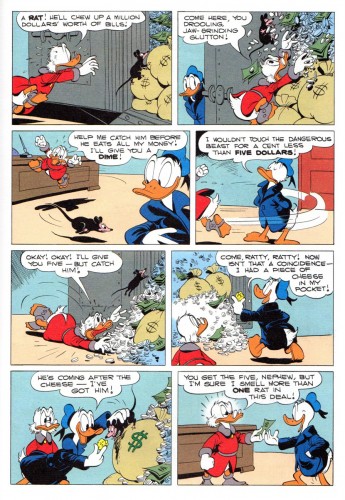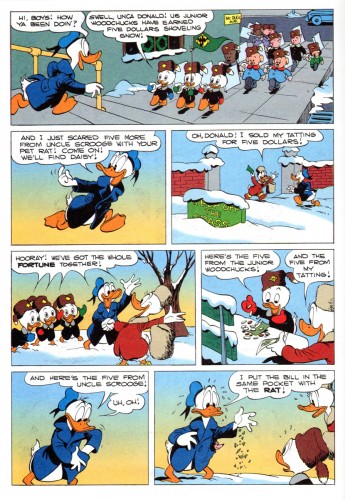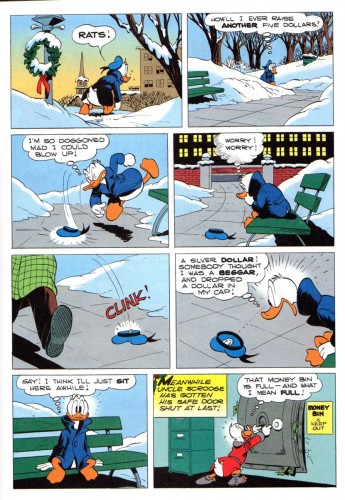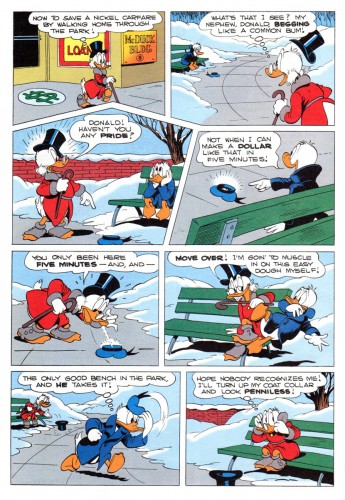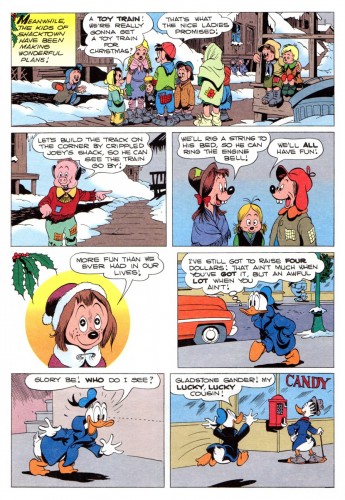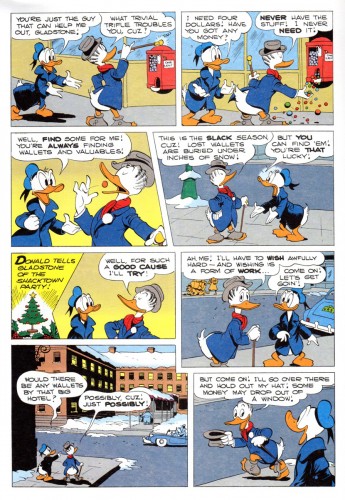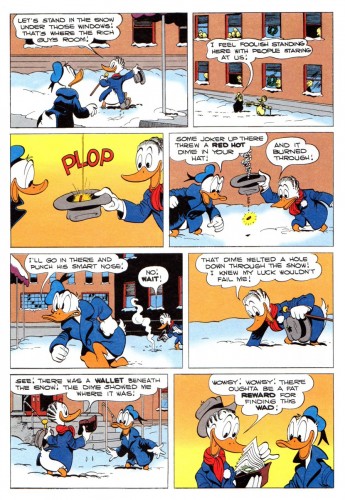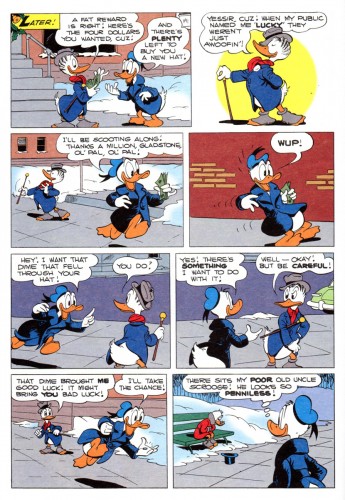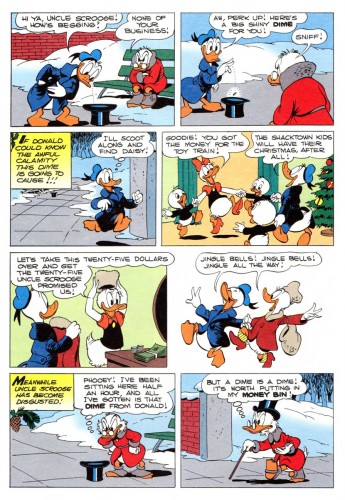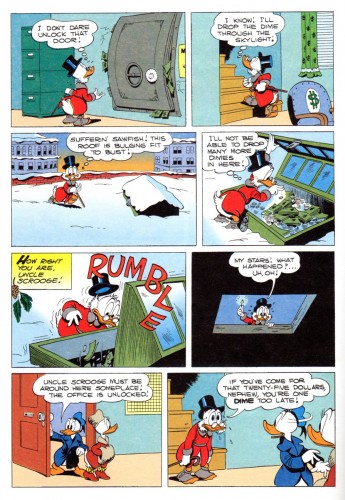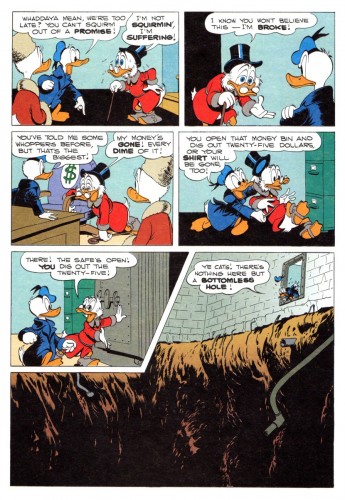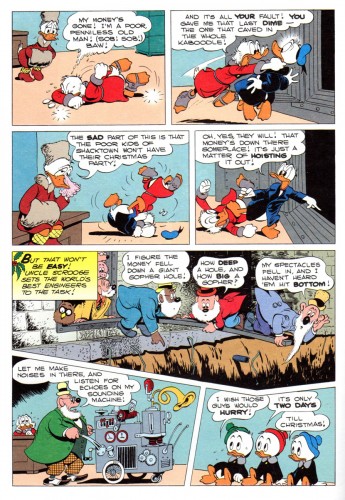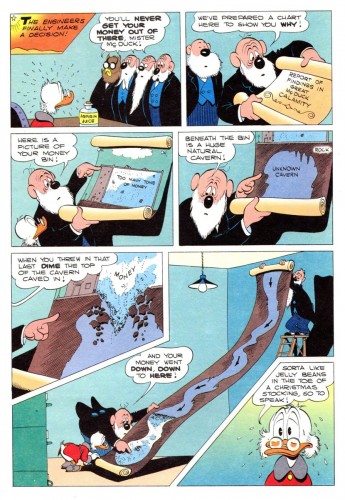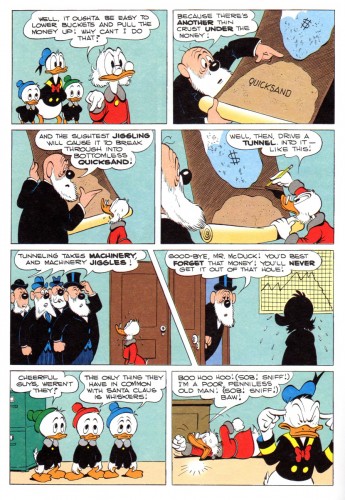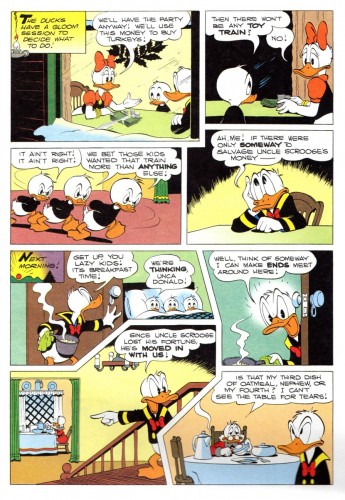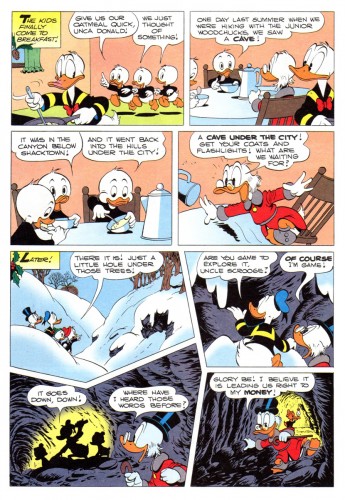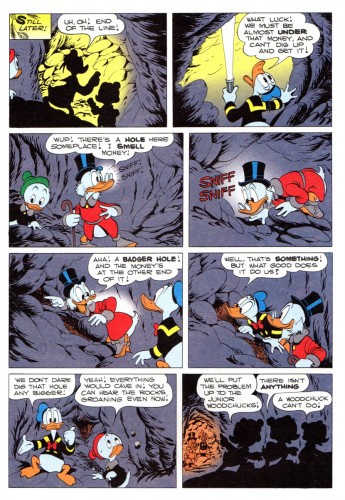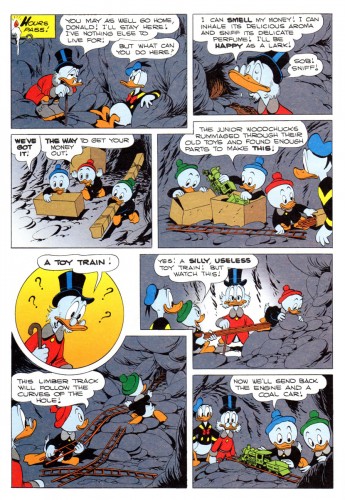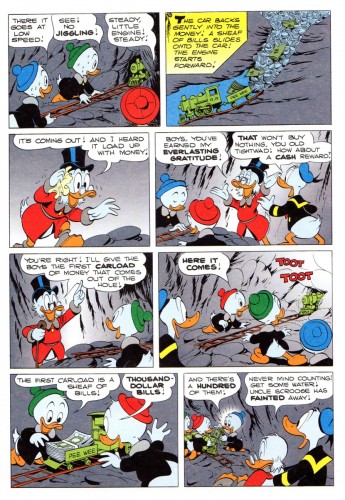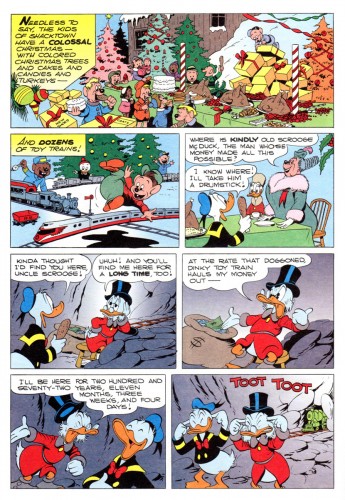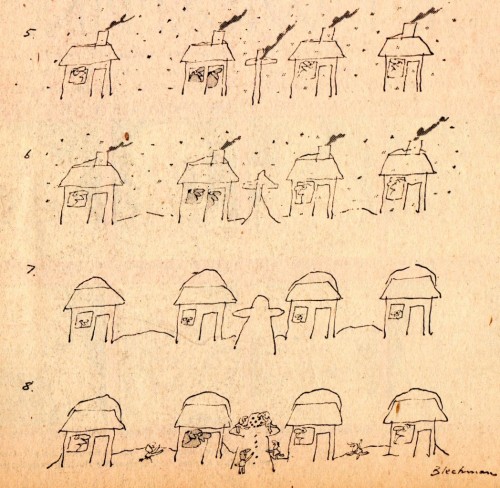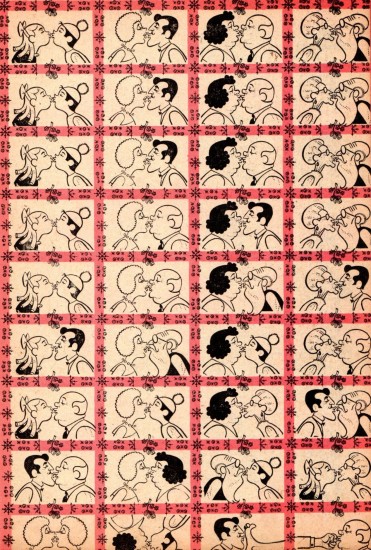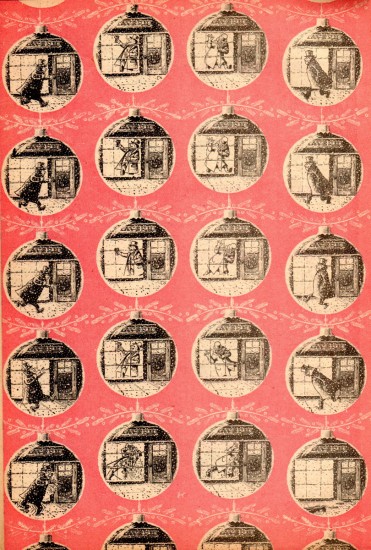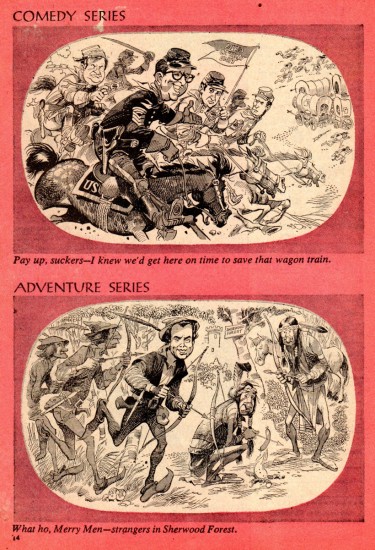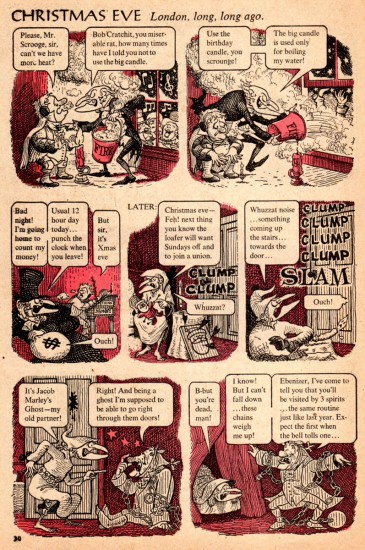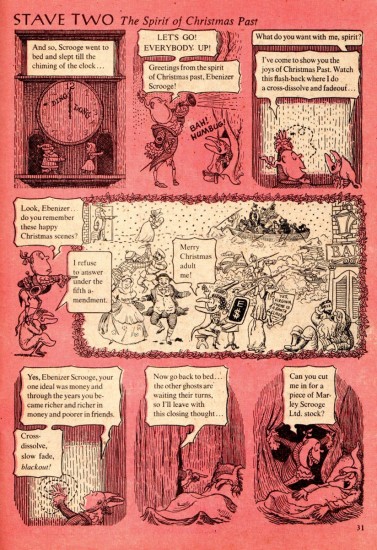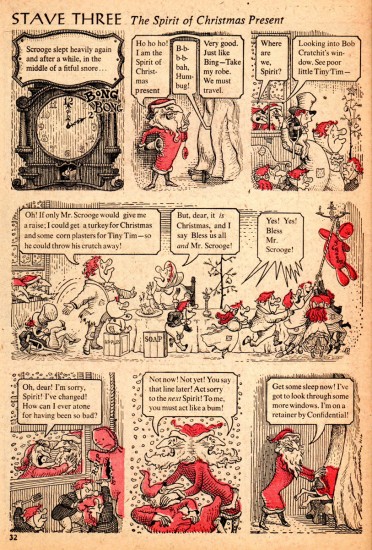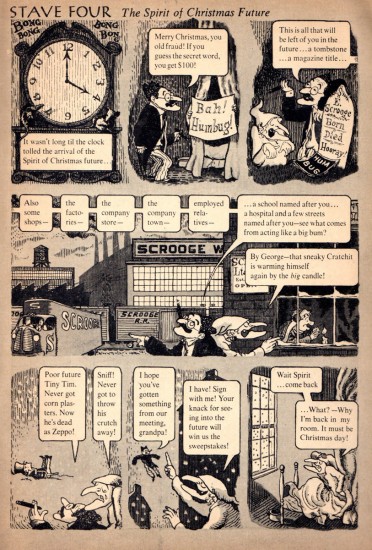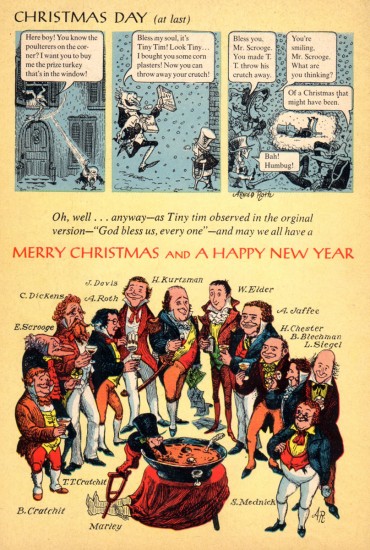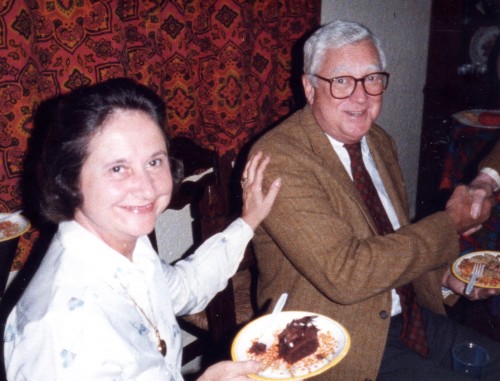Category ArchiveBooks
Bill Peckmann &Books &Disney &Illustration 25 Jan 2013 11:07 am
Snow White Book
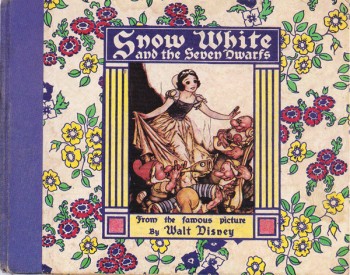 - I’m reading J.B. Kaufman’s two Snow White books, both at the same time, and I’m taking my time about it. Bill Peckmann aroused my interest with a couple of Snow White oddities. Featured in Kaufman’s The Fairest One of All is a the Whitman children’s book that was released with the initial release of the movie in 1937. (See the cover to the right.)
- I’m reading J.B. Kaufman’s two Snow White books, both at the same time, and I’m taking my time about it. Bill Peckmann aroused my interest with a couple of Snow White oddities. Featured in Kaufman’s The Fairest One of All is a the Whitman children’s book that was released with the initial release of the movie in 1937. (See the cover to the right.)
Bill sent me the cover of his copy of the book, bought at a local street fair. His version was the rerelease of the book by Grosset and Dunlap done in 1938. And it’s a beauty. The book contains some B&W screen images from the movie,, but more than half of it is made up of illutrations by Gustaf Tenggren, the studio artist/designer so responsible for some of the film’s look. He joined the studio in 1936 and had involvement in finishing the movie and giving it the Old World look that it has. Ferdinand Horvath and Albert Hurter were already at the studio when he joined and had equally strong contribution in the design. Tenggren was principal in the publicity materials done for the movie. Here’s the copy of bill’s book, complete with damaged cover:
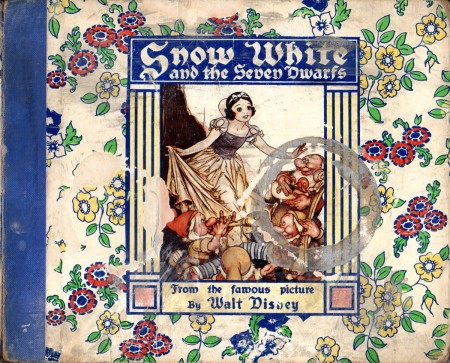
This is the dameaged cover of Bill’s book.
Animation &Books 21 Jan 2013 08:37 am
Heath Book – 6
- Here is the remainder of the Heath Book. This is a book that was written by Tony Creazzo, one of New York’s finer Assistant Animators and Bob Heath, a cameraman. Together they made an odd couple to author such a book. Yet, there’s no doubt that this material is first rate and there’s a lot to learn from the book they’ve given us. Originally, I thought the book looked too basic to be of interest, but the more I got into it, the more I realized how solidly constructed it is.
There are a few more pages of “Glossary and Terms” used in animation and for this book. It’s a lot of work scanning this oversized book and reconstructing it in photoshop. Since I don’t have the patience, I’m skipping these final few pages.
I learned that you can still buy the book on Amazon, which is quite amazing to me, but I’m glad to see it available if you look hard enough. I’d suggest buying a copy to include in your library, if you don’t already own it, before it’s completely out of print and very expensive.
If you want to see the remainder of the book you can go to these posts go here for: part 1, part 2, part 3, 4, 5.
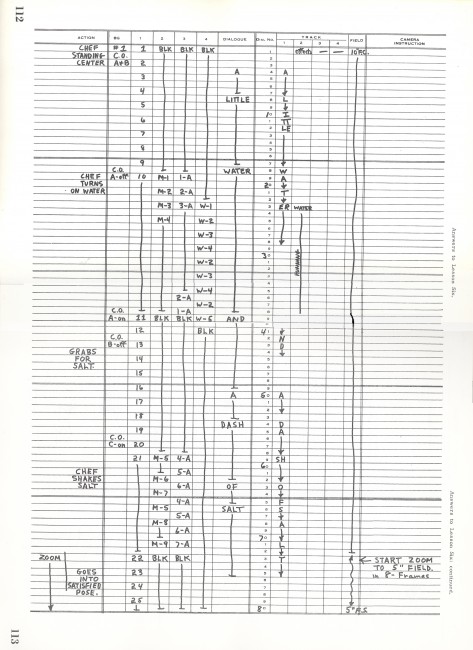 112-113
112-113
Bill Peckmann &Books &Comic Art &Disney &Illustration 18 Jan 2013 08:33 am
H2O, Donald and Mickey via Paul Murry
Water water everywhere and Paul Murry gets to draw it all. Here are two stories starring Disney’s greatest characters, Donald and Mickey. The two stories have three years apart from each other, but Murry gives us plenty of a stylized water, drawn slightly differently from one story to the next. How appropriate of Bill Peckmann to send us these tales when Congress finally got off their butts and voted the victims of Hurricane Sandy some financial relief. Here’s Bill’s comments:
- Here is another Paul Murry story containing H2O hi-jinks. It’s a ‘Walt Disney’s Comics and Stories‘ Donald Duck 10 pager from 1950. (It was the only year that DD regular Carl Barks missed doing a number of his signature character stories. There’s another great Murry Duck story that deals with an overnight flood; sorry, I just can’t remember what comic book it’s in.)
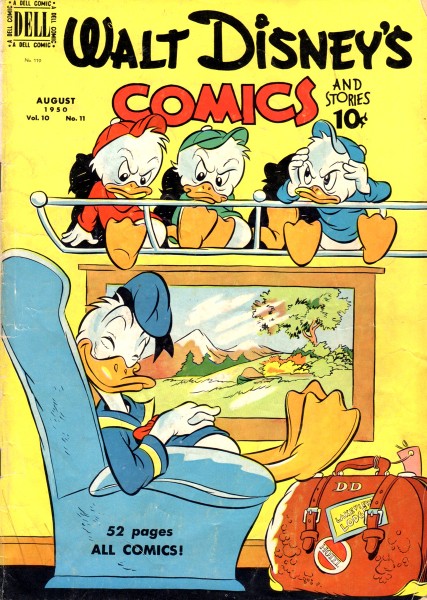
The comic cover from1950. This cover art is by Carl Buettner. ___________________________________________
If we jump three years to 1953, we’ll find another Paul Murry story with a strong focus on water. Here our intrepid artist adapts The Sorcerer’s Apprentice from Fantasia. (Perhaps there was a re-release of the film that year.) 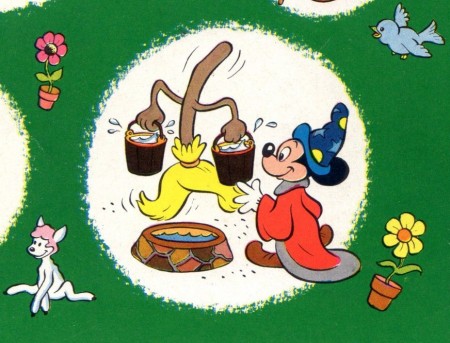
Part of the cover.
___________________________________________
- Speaking of Paul Murry, let me end by giving another pitch for the excellent collection of The Adventures of Buck O’Rue and his hoss, Reddish by Dick Huemer & Paul Murry. This is a rip roaring (you’ll be roaring with laughter) classic of a brilliant strip.
No, no one is paying me for this or prompting my wanting to remind you of the perfect Valentine gift. I just like this book and this strip, and I think you might like it, too.
Books 14 Jan 2013 07:25 am
Heath Book – 5
Essentially today, we finish the book. All that remains is a long section which gives answers to questions raised with each lesson. We’ll post a couple of them today (once we finish with lesson 12) and will complete the remainder next week. The “Answers” alone is 35 pages long.
To read past posts go here for: part 1, part 2, part 3, 4.
We pick up this week with page 89, Lesson 11:
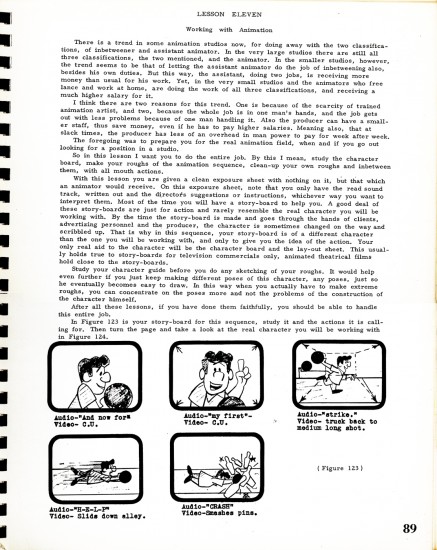 89
89
This is essentially the end of the book, the end of Lesson Twelve.
The remainder of the book offers “Answers” to questions posed at the end of each of the 12 Lessons. These are the first of those pages. I’ll complete the final post of these next week.
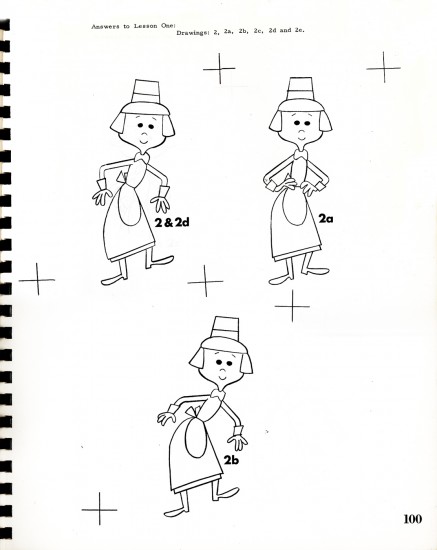 100
100
Bill Peckmann &Books &Illustration 11 Jan 2013 07:09 am
Baumgarten’s Sports
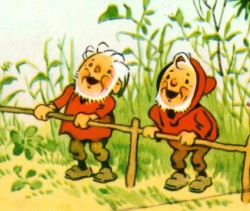 - Bill Peckmann has given us a wide assortment of beautiful books by Fritz Baumgarten. The illustrator has written many books built around a world of creatures and their environs that he’s created. His style is so affectingly attractive with the very rounded turns that we almost miss the beautiful inking and the fine watercolor techniques. The books are all very different, but there is a bit of a sameness to the work in that we don’t stray from the woods where the creatures – the small animals and dwarfs – make their homes.
- Bill Peckmann has given us a wide assortment of beautiful books by Fritz Baumgarten. The illustrator has written many books built around a world of creatures and their environs that he’s created. His style is so affectingly attractive with the very rounded turns that we almost miss the beautiful inking and the fine watercolor techniques. The books are all very different, but there is a bit of a sameness to the work in that we don’t stray from the woods where the creatures – the small animals and dwarfs – make their homes.
This book takes a different turn and gives Baumgarten a chance for some fun. Sportfest im Walde is obvious in its subject. The dwares and animals compete with a number of sports. From tennis to racing to boxing, activities abound.
I hope you enjoy it; I do. It’s a world I wouldn’t have otherwise seen, and I wish there’d been an animated version somewhere along the way. When Goebbels set up an animation studio to promote all things German, he should have animated hese books. They would have been wonderful as a series. They still are.
Many thanks, yet again, to Bill for the scans and the book, itself.
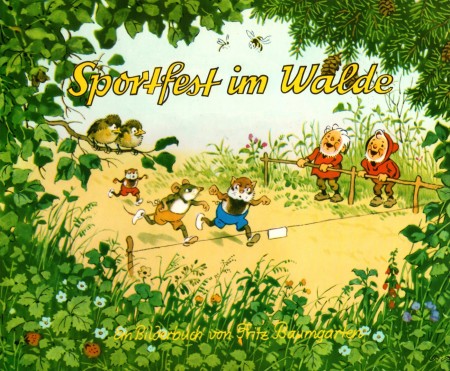
The book’s cover
Books &commercial animation 07 Jan 2013 07:32 am
Heath Book – 4
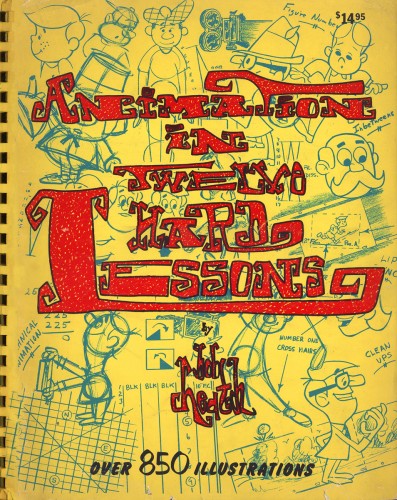 = For the past three weeks, I’ve been posting chapters from the Robert Heath book: Twelve Hard Lessons in Animation.
= For the past three weeks, I’ve been posting chapters from the Robert Heath book: Twelve Hard Lessons in Animation.
The book is an exercise in itself. It includes extremely complicated material mixed with the most basic. It’s an oversized book printed in the most basic way. A plastic binder holds it together and makes it feel like the workbook it is. There are plenty of exercises with the lessons and lots of examples (though these are often drawn pretty crudely) all designed to impart the information they want to get across.
As I’d written in the past, Tony Creazzo was one of New York’s finer Assistant Animators and Bob Heath was a cameraman. Together they make for an odd couple of a pair to author such a book. Yet, there’s no doubt that this material is first rate and there’s a lot to learn from the book they’ve given us.
To read past posts go here for: part 1, part 2, part 3.
We pick up this week with page 68, lesson 9:
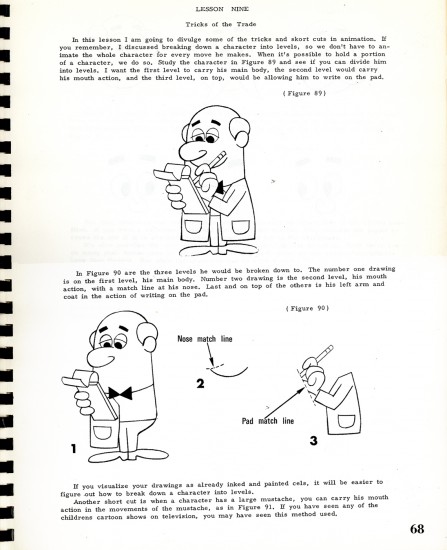 68
68
Animation Artifacts &Books &Commentary 02 Jan 2013 09:07 am
Guernica Eyes
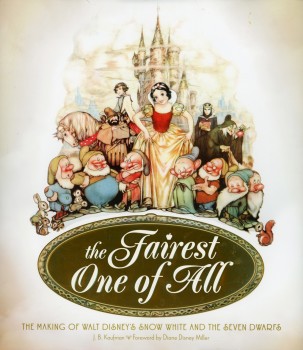 - I received a number of wonderful gifts this Christmas. Among them, from Heidi, came the two – count them, two – J.B.Kaufman books: Snow White and the Seven Dwarfs: The Art and Creation of Walt Disney’s Classic Animated Film and The Fairest One of All: The Making of Walt Disney’s Snow White and the Seven Dwarfs . Receiving one of these two books, both of which are expensive, is a luxury and a great gift to be treasured, but to receive both is above and beyond the treasure category. This is beyond the hoped for. And of course if you were asked to give the “list” of hoped for books, you feel guilty just requesting them. One of these books is expensive; the other is VERY expensive. Together, it’s outrageous. Unless, of course, you’re Mitt Romney’s child.
- I received a number of wonderful gifts this Christmas. Among them, from Heidi, came the two – count them, two – J.B.Kaufman books: Snow White and the Seven Dwarfs: The Art and Creation of Walt Disney’s Classic Animated Film and The Fairest One of All: The Making of Walt Disney’s Snow White and the Seven Dwarfs . Receiving one of these two books, both of which are expensive, is a luxury and a great gift to be treasured, but to receive both is above and beyond the treasure category. This is beyond the hoped for. And of course if you were asked to give the “list” of hoped for books, you feel guilty just requesting them. One of these books is expensive; the other is VERY expensive. Together, it’s outrageous. Unless, of course, you’re Mitt Romney’s child.
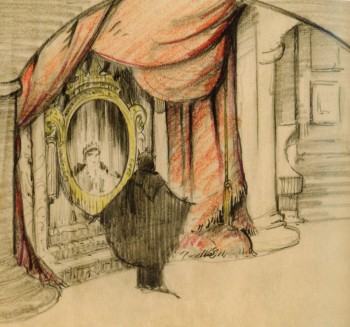 So I received both. I It was like having the Squid AND the Whale in my house, and I spent the day, in between Christmas outings, fingering both books delicately. I’d seen the less expensive book, Snow White and the Seven Dwarfs: The Art and Creation of Walt Disney’s Classic Animated Film, on a couple of different occasions. It’s beautiful.
So I received both. I It was like having the Squid AND the Whale in my house, and I spent the day, in between Christmas outings, fingering both books delicately. I’d seen the less expensive book, Snow White and the Seven Dwarfs: The Art and Creation of Walt Disney’s Classic Animated Film, on a couple of different occasions. It’s beautiful.
The other book, the one that costs almost twice the price of the first, I’d seen that book on a table – away. No copies. That made me want it all the more. It’s the book that has more of the writing in it. And that’s what I want – the words, the history. Those images are glorious, but the thoughts and ideas of Kaufman and others he’s investigating are the stuff I search for today.
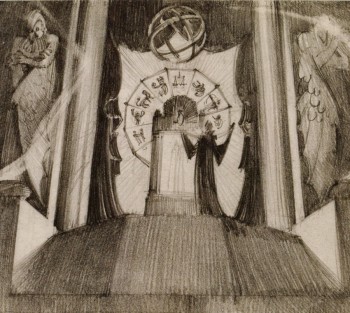 I started digging into and reading this second book: The Fairest One of All: The Making of Walt Disney’s Snow White and the Seven Dwarfs , and there were no disappointments here – not yet. As a matter of fact, it’s to the contrary.
I started digging into and reading this second book: The Fairest One of All: The Making of Walt Disney’s Snow White and the Seven Dwarfs , and there were no disappointments here – not yet. As a matter of fact, it’s to the contrary.
In the rear of the book, “Section Four: Production Notes,” Kaufman breaks the film drafts down verbally. Scene to scene, cut to cut we read who the directors are, who the animators were as well as their key Assistants. And the Effx Animators as well as the Asst Directors.
Funny how I thought, just now, how these last 3 names are less important than others. I don’t know why or if I really believe that. The information is there to disprove it one way or the other. This is a fine little section of the book. It gives real homage to the people behind the glorious animation of this film. Maybe someday we’ll be able to figure out who did which background. Take a look at that scene of the Queen sitting on her throne. Why is there no record of who was involved in painting that amazing backdrop? I seem to remember Maurice Noble talking about the scene, but I don’t have the verification to back up such a claim. I’m not a historian; I just have a faulty memory. All we have is whatever information the Disney archives can tell us. If they were able to tell us anything, Mr. Kaufman most certainly would have taken the information to print.
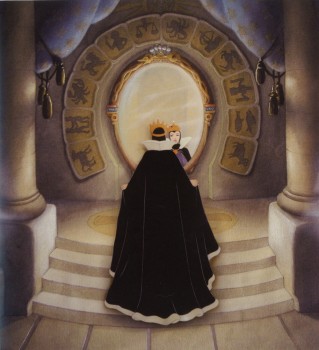
The Queen at the magic mirror. Note the astrological
signs surrounded the mirror from the very beginning
- see above preliminary drawings.
I’m not going to review the two books here; I haven’t really read them and can’t do that. I do know that they’re great books; you can sense it, see it, feel it, smell it. Snow White’s a seminal film for me. I get a thrill whenever I see some of the scenes from this movie, and I’m always hooked on it. The two books will keep me busy and help to let me feel the reason I love animation.
Truth be told, I can’t imagine anyone giving me more information than Mike Barrier did in his book, Hollywood Cartoons: American Animation in Its Golden Age. Or again he did it in The Animated Man: A Life of Walt Disney. The writing in those books is brilliant, but so, too, is it great reading in Kaufman’s books. The story by Barrier is complete, and I’ve already read both of his books half a dozen times, each. These two Kaufman books will keep me busy, and I’m happy for that. I’m sure the story will be more than complete here, too. I don’t know if there’s any more to learn, but I somehow suspect we will have a new view. At least I have good reason to believe so; I know I’m in the hands of a good historian, and I don’t expect to put these books down.
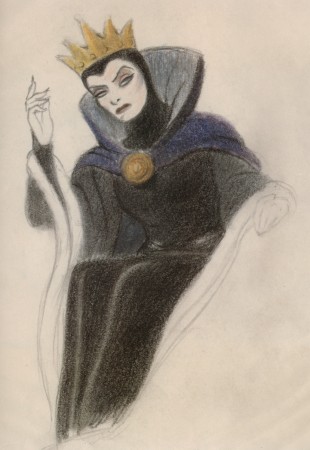
The Queen on her throne -
ah, there’s a background!
But I’ll save that for the real review.
By the way, don’t ask me why I called this post the heading I chose. Guernica Eyes. It seemed to fit, especially with that last Joe Grant drawing I’ve displayed. An amazing talent in a studio filled with amazing talent. When you see some of the art he did for Snow White, you can have no doubt of that. (As if you would after reading John Canemaker‘s Two Guys Named Joe.
Books &Commentary &Puppet Animation &repeated posts 27 Dec 2012 07:28 am
Jason Recapped
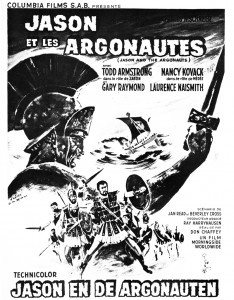
- I’ve thought about stop motion animation recently. Films like ParaNorman are beautifully made oversized spectacles that feel, to me, as if they were trying to mimic cg animation. The quality of the 3D animation has just about moved to the “slick” mode; the work has gotten so well done. This is the ultimate effect of mixing the computer with actual puppets, dolls that the computer creates that are then filmed. Isn’t that what happens with the hundreds of thousands of facial positions that are being created? I have a preference for Tim Burton’s puppet motion in films like Frankenweenie. You can feel the fingerprints on those dolls, unlike the excellent work done on ParaNorman.
I know, I’m complaining about the work being too well done. Too good to satisfy me. I just wonder what Ray Harryhausen would have done in this market. How would his films – rarely on ones, often clunky in its movement – have been accepted by modern audiences? Would audiences balk at that? Or would his extraordinary imagination take the bill and give us plenty to take in?
Last night I went to the movies and saw a lot of 3D action adventure trailers of films coming soon: Jack the Giant Slayer, Oz: The Great and Powerful, even the 3D version of Jurassic Park. There were more of them whose titles I’ve forgotten. They all seem the same – Loud and crushing with all those violent 3D moves. The same whooshing sound effect with every cut. It’s hard to get excited about any of them.
I once posted an article featuring Jason and the Argonauts. There was a chapter from Mr. Harryhausen’s 1972 book, Film Fantasy Scrapbook, about that film. I’d like to show it again. The book is written in the first person singular and collects B&W images like a scrapbook.
Here it is:
Of the 13 fantasy features I have been connected with I think Jason and the Argonauts pleases me the most. It had certain faults, but they are not worth detailing.
Its subject matter formed a natural storyline for the Dynamation medium and like The Seventh Voyage of Sinbad strayed far from the conventional path of the “dinosaur exploitation film” with which this medium seemed to be identified.
Taking about two years to make, it unfortunately came out on the American market near the end of a cycle of Italian-made dubbed epics based loosely on the Greek-Roman legends, which seldom visualized mythology from the purely fantasy point of view. But the exhibitors and the public seem to form a premature judgment based on the title and on the vogue. Again, like Sinbad, the subject brewed in the back of my rnind for years before it reached the light of day through producer Charles Schneer. It turned out to be one of our most expensive productions to date and probably the most lavish. In Great Britain it was among the top ten big money makers of the year.
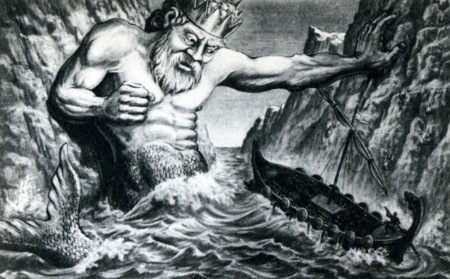
A preproduction drawing (above) compares favorably with a film still (below.)
The drawing is quite a bit more dynamic. (After all, it is Dynamation!)
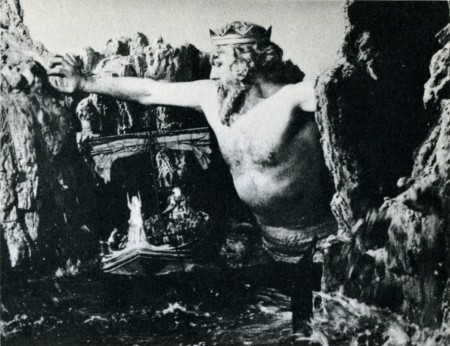
(Click any image to enlarge a bit.)
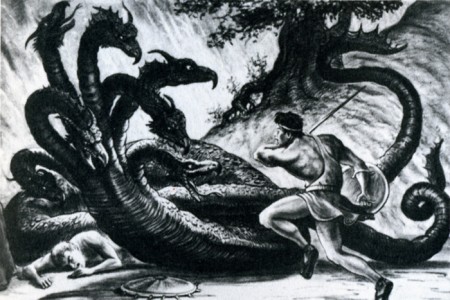
Likewise, a drawing of the hydra (above) film still (below.)
Some of the difference in basic composition between the pre-production sketches I made for Jason and the counterparts frames of the production is the direct result of compromising with available locations.
For example, the ancient temples in Paestum, southern Italy, finally served as the background for the “Harpy” sequence. Originally we were going to build the set when the production was scheduled for Yugoslavia. Wherever possible we try to use an actual location to add to the visual realism. To my mind, most overly designed sets one sees in some fantasy subjects can detract from, rather than add to the final presentation.
Again, it depends on the period in which it is made as well as on the basic subject matter. Korda’s The Thief of Bagdad was the most tastefully produced and designed production of any film of this nature but unfortunately the budget that was required would be prohibitive with today’s costs.
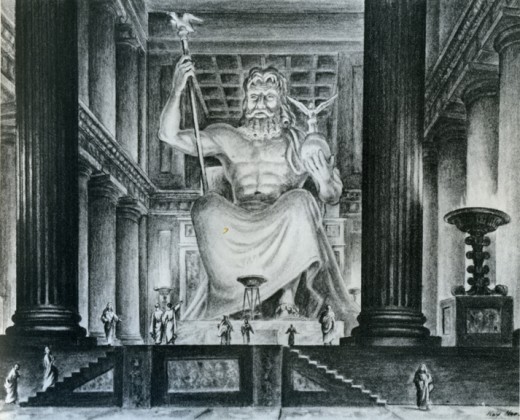
The Skeleton Sequence was the most talked-ahout part of Jason. Technically, it was unprecedented in the sphere of fantasy filming. When one pauses to think that there were seven skeletons fighting three men, with each skeleton having five appendages to move each frame of film, and keeping them all in synchronization with the three actors’ movements, one can readily see why it took four and a half months to record the sequence for the screen.
My one regret is that this section of the picture did not take place at night.
Its effect would have been doubled.
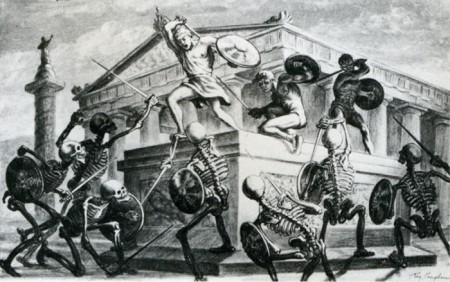
Certain other time-consuming technical “hocus-pocus” adjustments had to be done during shooting to create the illusion of the animated figures in actual contact with the live actors. Bernard Herrmann’s original and suitably fantastic music score wrapped the scenes in an aura of almost nightmarish imagination.
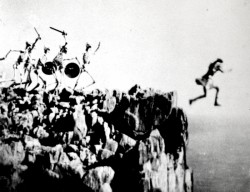
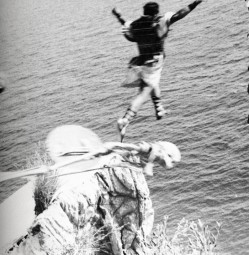
In the story, Jason’s only way of escaping the wild battling sword wielding “children of Hydra’s teeth” is to leap from a cliff into the sea. (Above left) A stuntman, portraying Jason for this shot, leaps from a 90-foot-high platform into the sea closely followed by seven plaster skeletons. It was a dangerous dive and required careful planning and great skill. It becomes an interesting speculation when dealing with skeletons in a film script. How many ways are there of killing off death?
(Above right) Another angle with the real Jason jumping off a wooden platform into a mattress a few feet below. The skeletons and the rocky cliff were put in afterwards while the mattress was blotted out by an overlay of sea.
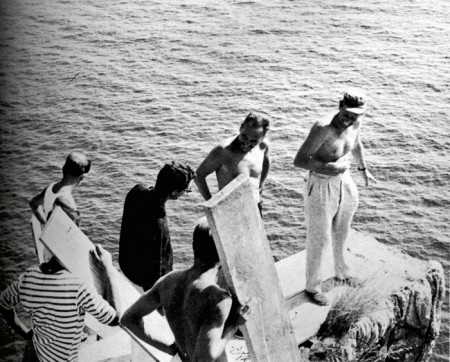
Director Don Chaffey and Ray Harryhausen discuss the leap with Italian stunt director Fernando Poggi.
When transferring published material to the screen it is almost always necessary to take certain liberties in the work in order to present it in the most effective visual terms. Talos, the man of bronze, did exist in Jason legend, although not in the gigantic proportions that we portrayed him in the film. My pattern of thing in designing him on a very large scale stemmed from research on the Colossus of Rhodes.
The actior: his blocking the only entrance to the harbor stimulated many exciting possibilities. Then too, the idea of a gigantic metal statue coming to life has haunted me for years, but without story or situation to bring it to life. It was somewhat ironic when most of my career was spent in trying to perfect smooth and life-like action and in the Talos sequence, the longest animated sequence in the picture, it was necessary to make his movements deliberately stiff and mechanical.
Most of Jason and the Argonauts was shot in and around the little seaside village of Palinuro, just south Naples. The unusual rock formations, the wonderful white sandy beaches, and the natural harbor were within a few miles of each other, making the complete operation convenient and economical. Paestum, w its fine Greek temples, was just a short distance north. All interiors and special sets were photographed in a sm studio in Rome.
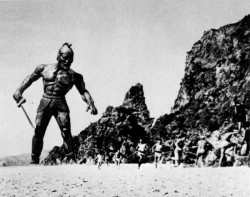
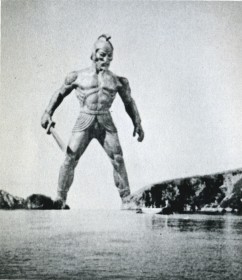 (Above left) Talos, the statue of bronze, pursues Jason’s men.
(Above left) Talos, the statue of bronze, pursues Jason’s men.
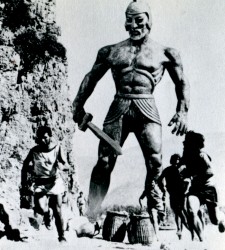
(Above right) Talos blocks the Argo
from the only exit of the bay.
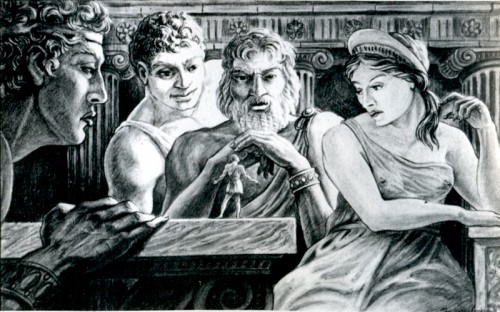
Pre-production drawing of Jason speaking to the Gods of Greece.
For the second unit operation a special platform had to be fitted to the Argo in order to achieve certain camera angles. Although it looks precarious it was far more convenient than using another boat for the shots.
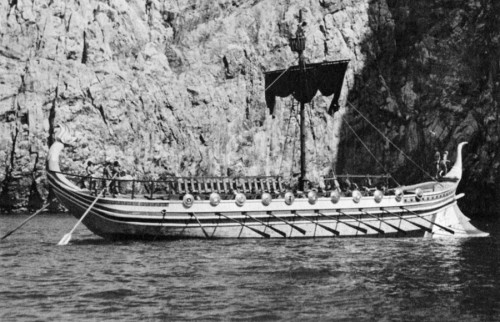
The Argo had to be, above all, practical in the sense that it must be seaworthy as well as impressive. It was specially constructed for the film over the existing framework of a fishing barge. There were twin engines for speed in maneuvering, which also made the ship easily manipulated into proper sunlight for each new set-up.
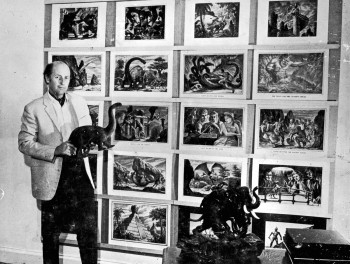
Harryhausen off the book’s back cover
to give an idea of scale of drawing sizes.
Bill Peckmann &Books &Comic Art &Disney 21 Dec 2012 07:10 am
Barks Shacktown
- Continuing with a great wallop of Christmas from the vast collection of Bill Peckmann, he sends along another Carl Barks gem. A Christmas for Shacktown glows off the page, and I’m pleased as punch to post it here. Bill’s introduction:
- What happens when you take Carl Barks at the height of his powers and combine him with that potent, powerful time of the year, Christmas? Why you get, ‘A Christmas for Shacktown’, that’s what!
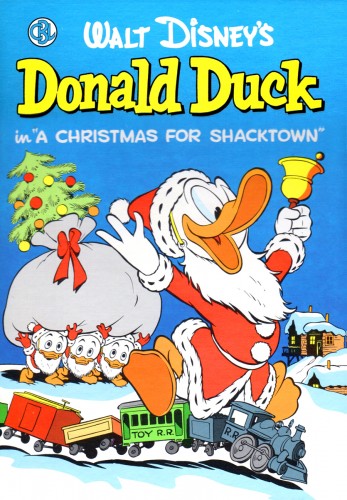
The magazine cover
The End
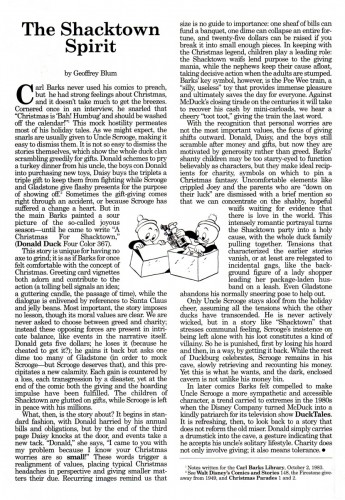
The original Dell Donald Duck ‘…Shacktown’ comic book
hit the newsstands for Christmas of 1951. The story we
just posted was from a Gladstone Comics reprinted and
re-colored some years later. This editorial essay by noted
Carl Barks historian, Geoffrey Blum, was also in the Gladstone issue.
Thanks again, Bill.
.
Bill Peckmann &Books &Comic Art &Illustration 18 Dec 2012 05:50 am
Humbug – Pages of Christmas
- We gave a little tease of this last week. Straight from the hot scanner of Bill Peckmann comes “Humbug” for Christmas joy. Here’s Bill:
- Next in our Holiday helpings is a 1958 HUMBUG magazine’s ‘Christmas Issue’ by Harvey Kurtzman and his coconspirators. Fortunately for us, they are knee deep in shoveling out their unique form of tom foolery for everyone to enjoy in 2012!
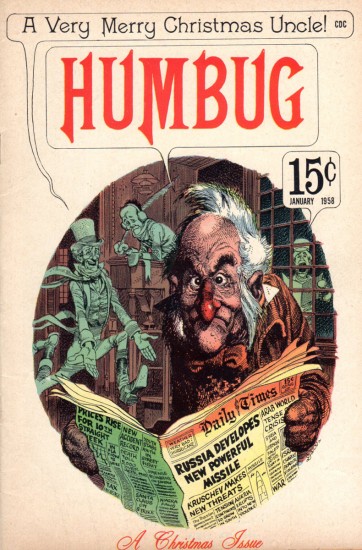 1
1The cover was done by Jack Davis.
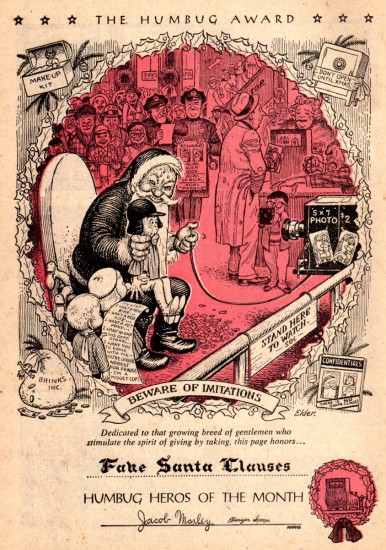 2
2
This page was done by Bill Elder.
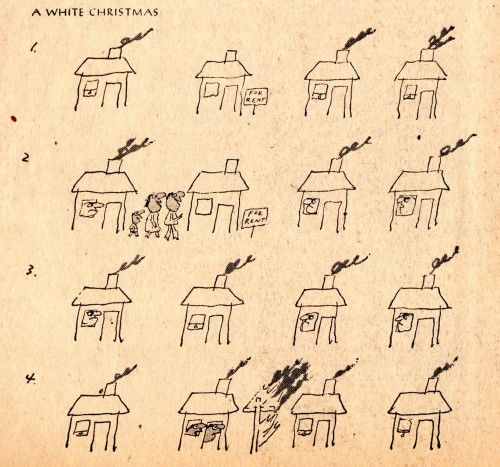 3
3
These two pages are obviously by the inimitable Bob Blechman.
 5
5
A piece by Al Jaffee, who went on to become
one of Mad magazine’s favorites.
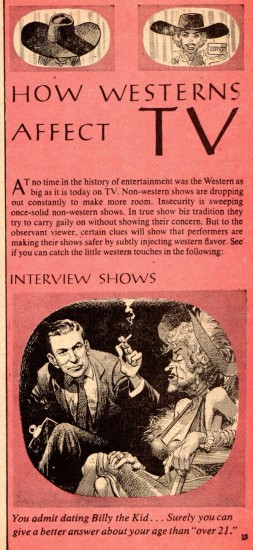 8
8
This three page spread does not have
a Christmas theme but it does have
Harvey’s ever lovin’ lay outs with
Jack Davis at his brush and pen best!
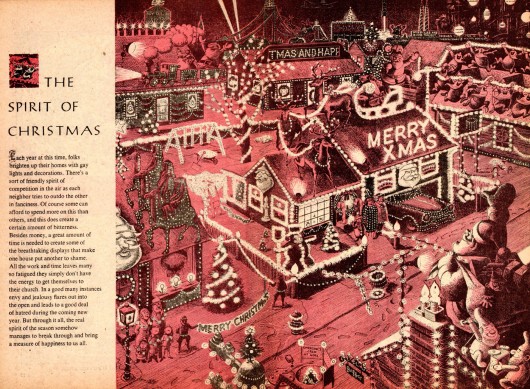
A tour de force two color centerfold spread by Al Jaffe.
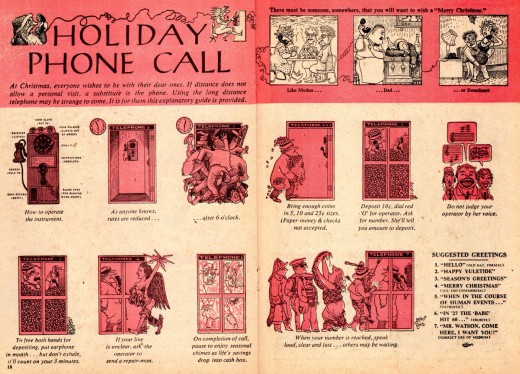
A double page spread by Arnold Roth.
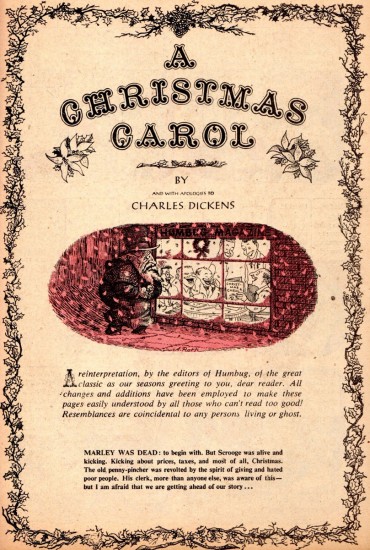 13
13
‘A Christmas Carol’, art by Arnold Roth.
While in a holiday mode, we will segue from a 1958 Humbug ‘Christmas Carol’ party
to a birthday party. It’s Harvey Kurtzman’s 58th birthday which was celebrated at
Harvey’s house in Mt. Vernon, NY, with family and friends in 1982. (Sorry about
the quality of the snapshots, they were taken with an old Kodak Instamatic camera.)
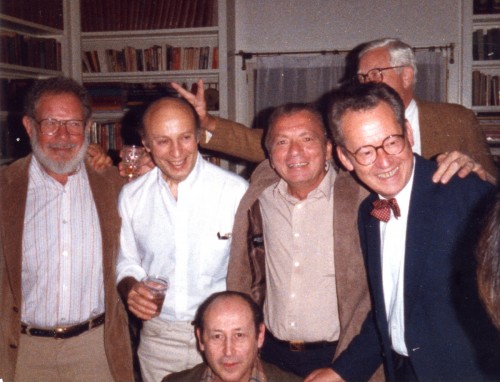 1
1
Appearing in the photo L. to R. are Al Jaffee, Harvey Kurtzman, Bill Elder (kneeling),
Harry Chester (Harvey’s long time production manager and longer time friend),
Arnold Roth and a partially hidden and mischievous Jack Davis.
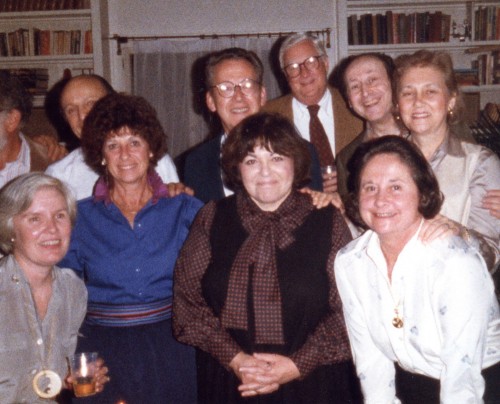 2
2
The HUMBUG crew with their wives.
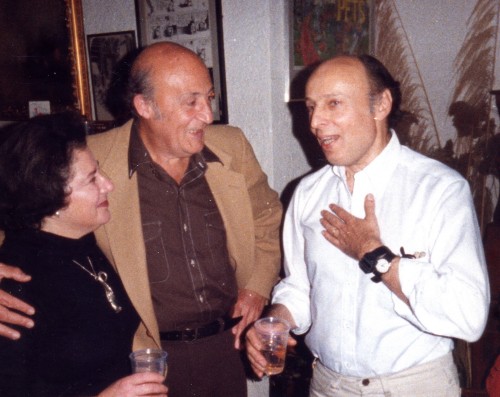 3
3
Mr. and Mrs. Will Eisner and Harvey.
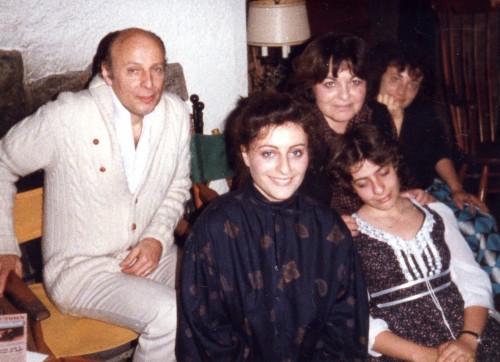 5
5
Harvey and his wife Adelle with daughters, Elizabeth, Nellie and Meredith.
.
Many thanks to Bill Peckmann for sharing this material with us.
.
